The NHL trade deadline for the 2024-25 season has passed.
For every significant trade that occurred during the season, you'll find a grade for it here, the Colorado Avalanche and San Jose Sharks swapping goaltenders, Cam Fowler to the St. Louis Blues, Kaapo Kakko to the Seattle Kraken, the blockbuster deal sending Mikko Rantanen to the Carolina Hurricanes and Martin Necas to the Avalanche, J.T. Miller from the Vancouver Canucks to the New York Rangers, and the Canucks staying busy and getting Marcus Pettersson from the Pittsburgh Penguins.
March 1 featured three big trades, with Ryan Lindgren headed to the Colorado Avalanche, the Minnesota Wild adding Gustav Nyquist, and Seth Jones joining the Florida Panthers. The middle of deadline week included a reunion for Yanni Gourde, heading back to the Tampa Bay Lightning along with Oliver Bjorkstrand. March 6 also brought a flurry, with Reilly Smith traded back to the Vegas Golden Knights, Brock Nelson headed to the Avalanche and Jake Walman shipped to the Edmonton Oilers.
Read on for grades from Ryan S. Clark, Kristen Shilton and Greg Wyshynski.
Jump to a trade:
Rantanen to DAL
Marchand to FLA
Carlo to TOR
Coyle to COL
Laughton to TOR
Tanev to WPG
Schenn to WPG
Cozens to OTT
Nelson to COL
Walman to SJ
Brazeau to MIN
Smith to VGK
Dumoulin to NJ
Gourde to TB
Frederic to EDM
Jones to FLA
Nyquist to MIN
Lindgren to COL
Granlund to DAL
J.T. Miller to NYR
Pettersson to VAN
Farabee, Frost to CGY
Rantanen to CAR
Kakko to SEA
Fowler to STL
Blackwood-Georgiev
Trouba to ANA
Jiricek to MIN

March 7: Rantanen traded again -- headed from Carolina to Dallas
Mikko Rantanen got the long-term contact he was seeking. But just not with the Carolina Hurricanes.
The Dallas Stars traded for Rantanen with an agreement in place that he would sign an eight-year extension worth $12 million annually, with the Hurricanes getting forward Logan Stankoven, a 2026 first-round pick, a 2027 first-round pick, a 2026 third-round pick and a 2027 third-round pick.
Exactly how did both front offices perform in what could be the biggest deal on deadline day?
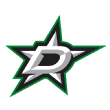
Dallas Stars
Grade: A
Facing Rantanen when he played for the division rival Colorado Avalanche meant the Stars had a strong appreciation for a 6-foot-4 winger.
So when the opportunity to get Rantanen without giving up a lot became a reality and they could offer him a long-term deal? It's what made the Stars decide to go all-in to get the former 50-goal scorer.
But getting Rantanen meant a shift in philosophy. The Stars worked their way into a championship window by drafting well. There are 11 players, including the injured Miro Heiskanen, on the Stars' roster who were drafted by the franchise.
That's why their decision to part with a 2025 first-round pick and a 2025 third-round pick for Mikael Granlund and Cody Ceci earlier this season was a sign that the mentality in Dallas could be shifting.
Getting Rantanen reaffirms that shift and shows they're willing to win at all costs.
Rantanen gives the Stars a top-line winger who can be used on the first line with Roope Hintz at center and Jason Robertson on the left wing. Those are two wingers who've scored more than 100 points, playing with a center who is one of the premier two-way forwards in the game. Rantanen gives them another primary facilitator and finisher on the power play, in addition to Wyatt Johnston, Thomas Harley, Hintz, Robertson and Heiskanen (when he eventually returns).
The Stars, who were already a front-runner to win the Stanley Cup, might have the strongest roster when they have their full complement of players.
Though getting Rantanen is a move for the present and the future, there is a strong emphasis for the Stars to win this year because of what lies ahead.
Stars captain Jamie Benn and Matt Duchene are part of a seven-player pending unrestricted free agent class. Shortly after Rantanen was traded, the Stars signed Johnston to a five-year deal worth $8.4 million annually as he was set to be part of a pending restricted free agent class that also includes Mavrik Bourque.
PuckPedia projected the Stars to have $25.83 million in cap space ahead of the offseason. Between the new Johnston and Rantanen deals, it slashes that figure to just $5.43 million.
Again, the Stars are built to win for the years to come, but there is an emphasis on trying to win right now.

Carolina Hurricanes
Grade: B
The Hurricanes' original trade to get Rantanen was done to help them win a Stanley Cup. They believed they had the cap space to offer him a significant contract, while also showing they learned the lessons that came from watching Jake Guentzel leave in free agency last offseason.
There was some thought the Hurricanes could use one of the first-round picks in this deal to go get another forward, but that didn't happen. So essentially, they moved on from Martin Necas and Rantanen, adding Stankoven and two first-rounders, while failing to get a proven top-line or top-six winger as they seek to win the Stanley Cup that has eluded them.
Or to say it another way: The Hurricanes are going through it.
Any return for Rantanen would be considered along with what the Hurricanes traded to get him in the first place. Necas has become the latest forward to find success within the Avs' attack-minded system. Jack Drury has created a role for himself in the bottom six. Though Rantanen's departure was unexpected, it still led to a return that has been fruitful for the Avs since that Jan. 25 trade.
This is what made the decision to go after Rantanen in the first place a complicated one. Front offices are often criticized for being too cautious if they're in a championship window, which the Hurricanes are certainly in at the moment. But the fact that the Hurricanes presented Rantanen with what they believed was a sizable contract offer and still felt the need to trade him? It reinforces why front offices are often risk-averse.
Stankoven, who has nine goals and 29 points in 59 games, projects as a top-six forward who could take a spot on the Hurricanes' third line. Though this was a trade that saw them receive an NHL player in return, it didn't see the Canes get someone who could instantly replace Rantanen on their top line.

March 7: Bruins send Marchand to Florida
Once again, Brad Marchand will be trying to help an Atlantic Division team win a Stanley Cup.
It just won't be the Boston Bruins with the club trading their captain to the Florida Panthers in exchange for a conditional 2027 first-round pick that could become a 2028 first-round pick if certain stipulations are met. The Bruins are also retaining 50% of Marchand's salary.
Here's a look at how both teams performed.
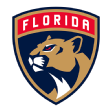
Florida Panthers
Grade: A-
Moving Matthew Tkachuk to long-term IR meant the Panthers were going to miss their star winger for the remainder of the regular season with the hope he would return in the Stanley Cup playoffs.
It created a need for the Panthers to find a potential top-six replacement for Tkachuk if possible. PuckPedia projected that the Panthers had $4.1 million in deadline cap space, which left them with the sort of financial flexibility to make a move.
That "something" was getting one of the best players of his generation who is also a certified expert in gamesmanship. And they got him for just 50% of his $6.13 million cap hit as he's set to hit the open market at the end of the season.
Although Marchand is out with an upper-body injury, he has scored 21 goals and 47 points in 61 games this season. He's a perennial playoff performer who had 10 points in 11 games last year and has averaged 0.88 points per game in the postseason. He has scored 13 game-winning goals in postseason play.
Every interested team knew he could play a pivotal role in winning a Stanley Cup. Or in the case of the Panthers, winning a consecutive Stanley Cup.
Yet what makes Marchand going to the Panthers even more alluring is the combinations it provides Paul Maurice. He could elect to place Marchand on a line with Sam Bennett and Tkachuk. Together, it would create a group that could score goals, forecheck, check and play numerous mind games just for the fun of it.

Boston Bruins
Grade: C+
Everything Marchand achieved in Boston created the idea that moving on from him could lead to the Bruins receiving a significant return.
Yet they were able to get only a conditional second-round pick that could become a first-round pick. The conditions of the trade are that if Marchand plays in more than 25% of the Panthers' games over the first two rounds, the pick then becomes a 2028 first-rounder.
And that's it. No other draft picks. No prospects. Just a conditional second-round pick that could become a first-round pick if Marchand plays in more than a quarter of the Panthers' playoff games through the first two rounds.
What makes the return puzzling is how it compares with what the New York Islanders received for Brock Nelson. The Islanders received a 2026 or 2027 first-round pick, a conditional 2028 third-round pick and the Colorado Avalanche's top prospect, Calum Ritchie, plus defenseman Oliver Kylington.
Sure, there is a debate to be had about the value of a center versus that of a winger. Although Nelson is three years younger than Marchand, they're both at the end of their deals, with the caveat that Marchand has won a Stanley Cup. Considering the Bruins made it clear this deadline they are hitting a reset button, there is enough to suggest that they could have garnered more for their now former captain.

March 7: Leafs land Carlo, ship picks, players to Boston, Pittsburgh
A couple of trades by the Toronto Maple Leafs resulted in them adding Brandon Carlo to their blue-line group while sending three players and a first-round pick away.
The Maple Leafs traded top prospect Fraser Minten and a 2026 first-round pick to the Boston Bruins for Carlo. They also traded forward Connor Dewar and defenseman Conor Timmins to the Pittsburgh Penguins for future considerations to clear roster space. The Bruins are retaining 15% of Carlo's salary.
How did each GM do here?
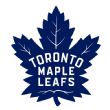
Toronto Maple Leafs
Grade: B+
Oh, the irony -- Toronto trading for a key player in the Bruins' core after years of being ousted from the postseason by, well, the Bruins' core.
And Carlo is undeniably exactly what the Leafs need for their blue line.
Toronto has established a top pairing of Chris Tanev and Jake McCabe, but hadn't found the right consistent partner for Morgan Rielly on their second pair. Enter Carlo. The 28-year-old is a 6-foot-5, stay-at-home, right-shot defenseman who can anchor a more offensive-minded D-man such as Rielly. Carlo is a disrupter, wielding a heavy game and towering net-front presence.
He instantly makes the Leafs' top-four rotation better and harder to play against. Plus, bringing in Carlo allows Oliver Ekman-Larsson to sit in a third-pairing slot where he's a more natural fit.
The Carlo acquisition also works in the Leafs' long-term picture, given he has two years remaining with a reasonable $4.1 million annual cap hit (15% of which will be picked up by the B's) -- excellent news for the perpetually cap-strapped team.
The Leafs couldn't get something for nothing, though. The price was high to snag Carlo, and Toronto had to make sacrifices for the future, starting with giving up their second first-round pick of the deadline (the other having gone to Philadelphia for Scott Laughton). Moving Timmins and Dewar to Pittsburgh was essentially to free up cap space. Them's the breaks.
Minten is a 20-year-old center who has performed well in his 15-game NHL tenure. Timmins, 26, has been a regular on the Leafs' back end as a serviceable third-pairing skater. And Dewar, 25, is a fourth-liner now who could have a greater impact up front with a larger opportunity -- something he's likely to find in Pittsburgh.
However, the Leafs were able to hold on to top prospects Easton Cowan and Ben Danford. That's fine work by GM Brad Treliving all around. Toronto must take advantage of its window to compete in the postseason and the addition of Carlo -- to supplement adding Laughton up front earlier -- gives the Leafs an excellent chance to be at their best this spring.

Boston Bruins
Grade: B+
The Bruins as we once knew them are gone.
First, it was Charlie Coyle to the Avalanche. Then Brad Marchand to the Panthers. And now, Carlo to the Leafs. It's the end of an era in Boston, and that's what makes this trade so solid for them. The Bruins bring in some fine young talents who will be part of their next chapter.
Minten is the centerpiece here. He doesn't have much NHL experience yet, but all the makings are there for him to be a consistent two-way forward. As Boston trends younger and rebuilds, it will give Minten an opportunity to grow within one organization that could keep him on for years to come.
The addition of another first-round pick to the Bruins' collection will help in the retooling process too.
Basically, this trade is exactly what Boston needed to do in order to fully embrace its current situation. We won't know the full extent of how it will impact the club until Minten settles in and the pick becomes a player, but right now Boston is using what assets it has available in the smartest way possible.

Pittsburgh Penguins
Grade: A-
It wouldn't be a trade season without Penguins GM Kyle Dubas adding at least one former Sault Ste. Marie Greyhound to his team's mix -- in this case, Timmins.
The Penguins were a third-party facilitator here so the Leafs could dump enough salary to bring Carlo into the fold. Naturally, the Leafs' former general manager was happy to pick up a couple of his own draftees in Timmins and Dewar.
But still, it's a trade that benefits the Penguins. Pittsburgh, like Boston, is barreling toward a retool, and it'll move along quicker with somewhat established skaters such as Timmins and Dewar as part of the process. There's a familiarity with their strengths and weaknesses, and the twosome should slide into more significant roles with the Penguins than they have in Toronto. -- Shilton

March 7: Bruins send Coyle to Colorado for Mittelstadt
Colorado and Boston both stayed busy ahead of the deadline with a major final-hour trade sending Charlie Coyle and a 2026 fifth-round pick to the Avalanche in exchange for Casey Mittelstadt, William Zellers and a 2025 second-round choice.

Colorado Avalanche
Grade: A-
Avalanche GM Chris MacFarland is going all-in on another Stanley Cup run and loading Colorado up for the journey.
It started late Thursday night with adding Brock Nelson from the New York Islanders. That ultimately pushed Mittelstadt into a third-line role for the Avs -- but MacFarland is upgrading there by swapping for Coyle. The 6-foot-3 pivot is a powerful presence who's good in front of the net and has an underrated scoring touch. That secondary scoring ability can make up for what Coyle lacks on the defensive side. Coyle also comes with one year remaining on his deal (with a $5.25 million cap hit) to give Colorado some insurance when Nelson, Ryan Lindgren and Jonathan Drouin all hit free agency.
Either way, Colorado is lining up Nathan MacKinnon, Nelson and Coyle down the middle. That's a fairly formidable trio and addresses a concern the Avalanche have had since Nazem Kadri walked away in free agency following their last Cup victory in 2022. Coyle brings some heft and physicality that Colorado has been searching for, and he's versatile to the point you could slot him higher up the chain if injuries become a factor.
While the Avalanche had great expectations for Mittelstadt when they traded for him at last year's deadline, the forward didn't pan out the way they hoped. And Colorado's unwillingness to stand pat -- made clear in earnest by the Nelson trade -- made Mittelstadt expendable despite what the Avalanche originally gave up acquiring him (including Bowen Byram).
The deal's sweeteners -- Zellers, a fine prospect, and a high draft pick -- to go along with Mittelstadt is no small haul for MacFarland to part with. But it falls in line with Tampa Bay GM Julien BriseBois' philosophy: better to try, and fail, then fail to try.
Colorado is attempting to win now. This is the kind of top-tier trade that can help them do it.

Boston Bruins
Grade: A
This isn't the Bruins' year. And GM Don Sweeney knows it.
May as well take advantage of a good market to be trading players away.
Sweeney grabbed a great return for Coyle. Mittelstadt comes with term (he's got two years left with a reasonable $5.75 million cap hit) and the 26-year-old can be a productive scorer (with 34 points in 63 games this season) and would benefit from a bigger opportunity in Boston.
Mittelstadt started strong in Colorado, but his playmaking tapered off and never fully recovered to the expected level. A fresh start with the Bruins -- who are on the cusp of searching for their own next direction -- takes some pressure off Mittelstadt and gives him a chance to reconnect with the confidence that made him a coveted target last year.
Zellers gives the Bruins needed prospect depth, too. Zellers has 37 goals in 40 games with the USHL's Green Bay Gamblers. The 18-year-old is headed for the NCAA at North Dakota next season.
Being able to put a second-round pick in the cupboard as well is more fine work by Sweeney. The Bruins are going to go younger anyway -- hence swapping out the 33-year-old Coyle for a younger player -- and picking up a good prospect and pick means more now to Boston than ever. Sweeney was able to capitalize on Coyle's value to a contending club and set his own up for a better future at the same time. -- Kristen Shilton

March 7: Leafs get Laughton from Philly
Having already possessed one of the stronger center situations in the NHL, the Toronto Maple Leafs decided to add more down the middle.
The Maple Leafs acquired center Scott Laughton in a trade with the Philadelphia Flyers that saw a conditional 2026 first-round pick and prospect forward Nikita Grebenkin head in the other direction.
Let's look at how both teams did.

Toronto Maple Leafs
Grade: B+
Options. That is what Laughton brings and it's exactly why the Leafs felt the need to part with a first-round pick plus a prospect to get him.
Laughton is a do-everything, two-way center who can be trusted to play in every situation. His 11 goals this season mark his fourth consecutive year of reaching double figures, and he's three points shy of his fourth straight year of more than 30 points.
His time with the Flyers saw him emerge into someone who could anchor a penalty kill as he has logged more than 115 short-handed minutes in three straight seasons.
Getting Laughton means the Leafs could push Max Domi, who was their third-line center, to right wing. If so, Domi and Laughton could play with Bobby McMann, giving the Leafs a slightly new-look third line that has a chance to be together next season with Laughton under contract for one more season at $3 million annually.

Philadelphia Flyers
Grade: B+
Laughton's versatility, his cap hit along with the extra year of cost certainty he provided interested parties is what made him the Flyers' most attractive player entering deadline day. But like any player, it was a matter of what the Flyers could receive in return.
What they got was a 2026 first-round pick that adds to their larger plan of building toward the future. The Flyers already have three first-round picks and four second-round picks in this year's draft. By adding another 2026 first-round pick, it gives them a consecutive draft cycle in which they have multiple first-rounders. It'll also be the third time in four years, with the Flyers having two first-round picks back in 2023. As for Grebenkin, he's a 21-year-old winger who has nine goals and 21 points in the AHL as he makes the adjustment to North America. -- Clark

March 7: Jets add forward depth in Tanev
In a week that already saw Yanni Gourde and Reilly Smith return to a familiar place, Brandon Tanev was able to do the same.
The Winnipeg Jets reacquired the veteran two-way forward in a trade with the Seattle Kraken, with a 2027 second-round pick heading in the other direction.
Here's a look at what it means for both sides.

Seattle Kraken
Grade: B
At this point, the goal for the Kraken is to add draft capital. They came into the deadline 12 points out of the final Western Conference wild-card spot in a week that saw them move on from Gourde and Oliver Bjorkstrand.
Those conditions made Tanev, a pending unrestricted free agent, a strong candidate to get moved before the deadline. It was just a matter of what the return would be for a player who the Kraken got as part of the expansion draft back in 2021.
Considering Tanev had a $3.5 million cap hit, there was a chance the Kraken could have had to retain salary. But they didn't have to, and the return was a 2027 second-round pick that now gives them four picks in the first two rounds of that year's draft.

Winnipeg Jets
Grade: B
There was a time when relying on their bottom-six forwards was an issue for the Jets. But this season has been different. The play of their bottom-six forwards is one of the reasons why the Jets are in the hunt for the NHL's best record.
Bringing back Tanev, who spent the first four seasons of his career with the Jets, only reinforces that approach. Any team that was interested in Tanev knew it would be getting an aggressive forechecking forward with speed who could also provide production at the bottom of a lineup.
His arrival now gives the Jets another fourth-line option who could enhance what they already have with Morgan Barron, David Gustafsson and Alex Iafallo, while also providing them with another forward who can be trusted on the penalty kill. -- Clark

March 7: Jets get Luke Schenn from Penguins
As it turns out, Luke Schenn will remain in the Central Division after all.
Schenn was traded to the Winnipeg Jets with the Pittsburgh Penguins receiving a 2026 second-round pick and a 2027 fourth-round pick just days after he was initially traded to Pittsburgh by the Nashville Predators.
Here's a quick glance at what it means.

Winnipeg Jets
Grade: B
It's not that the Jets were struggling to figure out what their top-four setup would look like going into the playoffs. In fact, it's the opposite. The Jets, like the Edmonton Oilers, are a team in which their four leading skaters in ice time are all defensemen.
Even with four defensemen who are averaging more than 20 minutes, the Jets still wanted to add more depth for their third pairing and more playoff experience.
Getting Schenn fits those needs. He's a two-time Stanley Cup champion who has operated in that role before. His arrival also gives the Jets someone who provides a physical presence while giving another option on the penalty kill.
Furthermore, this isn't just a trade for this season. The Jets are a perennial playoff team that now has certainty with Schenn -- who has one more year left on his contract at $2.75 million annually -- ahead of an offseason in which Neal Pionk is a pending unrestricted free agent and Dylan Samberg is a pending restricted free agent.

Pittsburgh Penguins
Grade: A-
The Penguins are clearly not hiding the fact that they are concentrating on the future. And when a team chooses to walk down that path, it places an emphasis on getting as much draft capital as possible.
It's what made their decision to acquire Schenn earlier this week one that was always about a much larger picture.
Being nine points out of the final Eastern Conference wild-card spot meant the Penguins were more about draft capital than trying to make a late playoff push. Schenn was always going to be one of those defensemen whom a playoff hopeful was going to have interest in attaining because of what he provides.
Having Schenn meant the Penguins needed to capitalize on his value by getting draft capital. They did by adding a 2026 second-round pick which now gives them three second-round selections in 2026 alone. The fourth-rounder for 2027 now means they have two picks in that round as part of a 2027 cycle in which they have three consecutive rounds of more than two picks. -- Clark

March 7: Cozens to Ottawa and Norris to Buffalo
The Buffalo Sabres and Ottawa Senator hooked up on an Atlantic Division trade, with Dylan Cozens and Josh Norris the headliners.
Cozens, defenseman Dennis Gilbert and a 2026 second-round draft choice are headed to Ottawa for forward Josh Norris and defenseman Jacob Bernard-Docker, the teams announced.
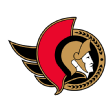
Ottawa Senators
Grade: B
Cozens has been in trade discussions pretty much all season, as teams coveted the 6-foot-3 "Workhorse from Whitehorse." He's 24 years old and this is the second year of a seven-year contract extension he signed with the Sabres that carries a $7.1 million average annual value.
Ottawa is trading for potential here, but with some proof of concept: Cozens is two seasons removed from 31 goals and 37 assists in 81 games -- a season during which, perhaps not coincidentally, he signed his $49.7 million extension. He has failed to replicate that over the past two seasons, with just 18 goals in 79 games in 2023-24 and 11 goals in 61 games so far this season, where he's shooting a putrid 7.9%.
His defensive play has really trended in the wrong direction, too: Cozens is second to last among Sabres players in even-strength defense goals above average, per Evolving Hockey. He's an average skater, which impacts his overall game too.
But the glimpses are important. Cozens showed so much potential in 2022-23. He had moments over the next two seasons that have recalled that dominance. There's something there that the Senators can unlock, with Cozens' ceiling being a solid No. 2 center worth the contractual investment. But we haven't seen that guy in two seasons.
What we have seen, and this is important: Cozens playing the majority of his team's games. He missed seven games over the course of three seasons and hasn't missed one yet this season. That's the sharpest contrast with Norris, a talented player who simply can't stay in the lineup.
Gilbert is a journeyman through six NHL seasons, playing for Chicago, Colorado, Calgary and then Buffalo for 25 games this season. A clear downgrade from Bernard-Docker as far as age, but pretty much a wash as depth defensemen.
What pushes this grade up a bit for Ottawa is the second-round pick from the Sabres in 2026. It's a deep draft and given Buffalo's recent fortunes, that might end up being like a low first-rounder.

Buffalo Sabres
Grade: B+
The Sabres will probably get crushed for doing this trade because Cozens is younger, cheaper and has certainly stayed in the lineup more than Norris. But I'll submit my minority report: I understand what GM Kevyn Adams did here and I don't mind it.
Buffalo hasn't been in the Stanley Cup playoffs since "Fast 5" was in theaters. (To put that in context, the 11th "Fast and the Furious" movie is scheduled for 2026.) The past few seasons of this unwavering drought have seen the Sabres double down on the same collection of young players who haven't shown significant growth. It was time for Adams to start turning a few of his "maybes" into established NHL players, and he has done that with Norris.
Like Cozens, Norris has one season of fulfilled promise: 35 goals and 20 assists in 66 games back in 2021-22 with the Senators. His past two seasons have been at two points for every 60 minutes of play on average. He has been over that average four times in his career, including this season with 20 goals and 13 assists in 53 games. There's no question he's a more established NHL-caliber center than Cozens at this point in their careers.
But he's older, turning 26 in May. While both Cozens and Norris have contracts that expire in 2030, Norris has a higher cap number ($7.95 million AAV). And as has been noted a few times here, Norris has missed significant time in each of the past four seasons.
The Sabres are already selling low on Cozens' contract, and the wager here from Adams is that his value might only decrease if he doesn't recapture the magic of that breakout season. If Cozens struggles for a third season offensively -- and this might be Buffalo acknowledging that's likely, given its own trajectory -- then he becomes a disappointment with a fat contract. Trading him now for an established NHL player is the kind of trade he should be making to get the Sabres back to the postseason.
We just wish it wasn't for someone made of porcelain.
Giving up the second-rounder in this deal is just acknowledgement that Norris is the better player.
Bernard-Docker, 24, had been on long-term injured reserve and is a pending restricted free agent. He's a depth defenseman in his fifth NHL season, playing just over 13 minutes a night in 25 games.
As much as we support Adams turning young players into established ones, we also have to acknowledge the concerns of Sabres fans that every talented player who leaves Buffalo -- Sam Reinhart, Ryan O'Reilly, Jack Eichel -- finds instant success in his next stop. Perhaps Cozens will be the exception. -- Wyshynski

March 6: Avs land Nelson in overnight blockbuster
The need to find a second-line center led the Colorado Avalanche to Brock Nelson, the player considered to be the top center available before Friday's deadline.
Nelson and prospect forward William Dufour were traded to the Avalanche, with the New York Islanders receiving defenseman Oliver Kylington, prospect forward Calum Ritchie, a 2026 or 2027 first-round pick and a conditional 2028 third-round pick. The Islanders retained 50% of Nelson's salary, and immediately traded Kylington to the Anaheim Ducks in a separate deal for future considerations.
If Colorado's 2026 draft pick is transferred to the Philadelphia Flyers subject to terms of a previous trade, or it is not transferred and is in the top 10 of the 2026 draft, Colorado will send its 2027 first-round pick to New York. The Avalanche sent that lottery-protected pick to Philadelphia in acquiring defenseman Sean Walker last season.
How did both front offices fare in one of the biggest trades before the deadline?

Colorado Avalanche
Grade: B+
This trade could help the Avalanche win their second Stanley Cup of the 2020s -- and it could also lead to another big move ahead of Friday's deadline.
The narrative surrounding the Avalanche since winning their most recent title in 2022 has been the need to find consistent secondary offense, particularly a No. 2 center after Nazem Kadri left in free agency after that Cup run.
Nelson is the latest potential solution to a problem that has been attempted to be solved by Ross Colton, Jonathan Drouin, Ryan Johansen, Casey Mittelstadt and Martin Necas over the last few years. It's led to some players finding success, with others moving on. In the end, the Avs have failed to get beyond the second round the past two postseasons.
Nelson is a legitimate top-six forward, and can handle the demands of being a second-line center also capable of scoring goals. His 20 goals and 45 points in 61 games mark the ninth time he's hit the 20-goal mark. He's on pace to finish with more than 50 points for a fourth straight season.
The veteran pivot gives the Avs a responsible two-way center who could anchor a second-line with Drouin and Valeri Nichushkin. That's a combination that can score goals while also being actively aggressive on the forecheck to control possession.
Nelson's potential usage could go beyond the second line; a 6-4 forward would make a fine addition to the first-team power play too. They could also use Nelson on the penalty kill, considering he has logged more than 76 short-handed minutes this season, the third-highest total of his career.
So what does this mean for Mittlestadt?
He's gone from being a candidate to be Colorado's second-line center to someone who just cost the Avs their top prospect and a first-round pick to get a more proven option in Nelson, who is on an expiring contract.
It was just a year ago when they traded Bowen Byram for Mittelstadt, with the premise that he could be their long-term second-line center. He signed a three-year contract worth $5.75 million annually, but did not play up to that standard, being moved down to the fourth line at one point this season.
Adding Nelson pushes Mittelstadt to the third line. It's possible the Avs could keep him there and then figure out what the future looks like this summer, when Drouin, Nelson and Ryan Lindgren all hit free agency. Or they could trade him now, with the belief what they receive in return will strengthen their bid for a championship.
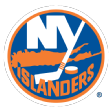
New York Islanders
Grade: A+
The Islanders made this trade while four points behind the Ottawa Senators for the final Eastern Conference wild-card spot, though there are four teams between them.
And with the Isles having the center considered to be the strongest at that position ahead of the deadline, they demanded -- and got -- quite a bit for Nelson.
Conceding that the playoffs might not be in their immediate future meant the Isles had to examine the larger picture. A farm system that once supplied them with players like Josh Bailey, Mathew Barzal, Anders Lee, Adam Pelech, Ilya Sorokin, John Tavares and Devon Toews was struggling.
Aside from Sebastian Aho, Noah Dobson, and Simon Holmstrom, the Isles hadn't developed much home-grown talent since 2016, compounded by trading away a number of first-round picks.
It's why their prospect pool has just one first-round pick since 2020: Boston University freshman forward Cole Eiserman (2024), who is their top prospect.
This fallow farm system meant the Isles needed to get a first-round pick or a top prospect from another franchise. Nelson was able to get them a first-round pick and Ritchie, the top prospect in the Avs system.
A first-round pick in 2023, Ritchie projects as a playmaking, two-way forward. He has 14 goals and 67 points in his fourth full season with the OHL's Oshawa Generals. He's on pace to finish with 78 points in 48 games after recording 80 points in 50 games in the 2023-24 season.
He adds to a prospect forward group that's headlined by Eiserman and Notre Dame sophomore Danny Nelson, a second-round pick in 2023. Eiserman has 19 goals and 27 points in 32 games for the Terriers, while Nelson has 13 goals and. 26 points in 32 games for the Fighting Irish.
While the first-rounder they received is for 2026 or 2027, they now have a pair of first-round picks one of those years. They have seven picks for the 2025, and could add to that total if they move on from other veterans ahead of 3 p.m. Friday. -- Clark

March 6: Oilers add to blue line with deal for Walman
The Edmonton Oilers followed up with their latest victory on Thursday night by acquiring defenseman Jake Walman in a trade with the San Jose Sharks. A conditional 2026 first-round pick and forward Carl Berglund head to San Jose.
Here's a look at what the deal means for both teams.

Edmonton Oilers
Grade: B+
No four skaters have logged more 5-on-5 ice time this season for the Oilers than their top-four defensemen: Evan Bouchard, Brett Kulak, Mattias Ekholm and Darnell Nurse.
That quartet has played a central role in why the Oilers are in the top 10 in terms of fewest shots allowed per 60 minutes, fewest scoring chances allowed per 60 and fewest high-danger chances allowed per 60, according to Natural Stat Trick.
Heavily relying on four players that much is risky, which was evident in the 3-2 overtime win Thursday over the Montreal Canadiens. Ekholm missing the game meant that the Oilers had to use Troy Stetcher on the top pairing. That led to a third pairing featuring Ty Emberson, who is in his first full NHL season, playing with Cam Dineen, who has spent the last three campaigns in the AHL.
In other words, they needed to add some depth to the blue-line group, a search that ended with Walman. He continued to build upon what he did with the Detroit Red Wings in his first season with San Jose. Walman served as a facilitator, who can quarterback a power play and also anchor a penalty kill.
Walman was more intriguing because has one year remaining on his contract, at $3.4 million annually; this is part of the reason why the Oilers had to pay such a hefty price.
Any team that wanted Walman either had to find a third-party broker or be willing to take on his salary, because the Sharks already filled their three salary retention slots. The Oilers were able to make his cap hit work by moving Evander Kane to LTIR and Trent Frederic to IR.
Adding Walman left the defending Western Conference champions with just $300,560 in deadline cap space, per PuckPedia.
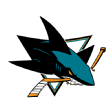
San Jose Sharks
Grade: A
The Sharks acquired Walman this past offseason in a salary dump from the Red Wings, gaining a second-round pick in the 2024 draft in the process (used on defenseman Leo Sahlin Wallenius).
Walman continued making progress as a Shark, and San Jose was able to turn him into a first-round pick less than a year after they traded future considerations for him. And they did it with the Oilers taking on his full freight, given that San Jose's three retention slots were all used.
The Sharks will get one of those slots back next year with the Brent Burns deal coming off the books, while they'll still have two campaigns of Erik Karlsson's contract at $1.5 million annually and three more seasons of Tomas Hertl at $1.39 million.
Sharks general manager Mike Grier's plan of stockpiling draft capital has included grabbing as many early-round picks as possible, and that continues here. They currently have six picks in the first four rounds of this year's draft, and they will pick four times within the first two rounds in 2026.
Of course, the Sharks might not be done moving on from players. They could trade another pending UFA such as forward Luke Kunin, who has a $2.75 million cap hit, and was held out of Thursday's game for roster management purposes. -- Clark

March 6: Wild add some heft to lineup via Brazeau swap
One team that needed more goals struck a deal with another team that's trying to plan for the future.
The Minnesota Wild acquired Justin Brazeau from the Boston Bruins in exchange for forwards Marat Khusnutdinov, Jakub Lauko and the Bruins' own 2026 sixth-round pick (previously acquired in the Pat Maroon deal).
Here's a look at how both teams performed in the trade.

Minnesota Wild
Grade: B
The Wild have been searching for more scoring consistency, but have had to contend with injuries and an extremely tight cap situation.
Part of what makes Brazeau's arrival vital is his addition to a bottom-six forward group that is expected to be critical for the Wild to qualify for the postseason.
They have six players with more than 10 goals this season, and when healthy, five of them occupy top-six roles. A fully healthy complement of forwards means that sixth scorer of more than 10 goals, Marcus Foligno, is on the third line. But injuries have seen him move up to the second.
Adding Gustav Nyquist last week while Joel Eriksson Ek and Kirill Kaprizov recover from injuries gave the Wild another top-six option, which pushed Foligno back to the third line. Brazeau provides goals at a cheap price, and he provides another potential scoring option to the bottom six.
Namely, the Wild's fourth line. Foligno is playing with Ryan Hartman, who has returned from suspension and Vinnie Hinostroza, who has four points in eight games this season.
Should that combination hold, it would give the Wild a fourth line featuring Devin Shore, Yakov Trenin and Brazeau, and could potentially spark Trenin, who is trending below his past production.

Boston Bruins
Grade: B+
Given the Bruins' spot in the standings, the buzz was that any pending unrestricted free agent could be on the move. The Bruins already traded Trent Frederic to the Edmonton Oilers, and did so again with Brazeau.
Brazeau has 10 goals and 20 points in 57 games, while carrying a $775,000 cap hit, which made him a useful addition for cap-strapped contenders. His 6-6 frame makes him a net-front presence who adds size to a forward group entering the playoffs.
Speaking of the playoffs, the Bruins aren't entirely out of it just yet; they were three points behind the Ottawa Senators for the final wild-card spot as one of six teams within five points of the Senators.
As a result, finding a strong return was crucial; they were able to nab two players who can help them now and beyond, plus a draft pick.
Lauko, a third-round pick by the Bruins in 2018, has gone through an injury-riddled season. He has six points in 38 games a year after having 10 in 60. He provides the Bruins with another bottom-six option to replace the one they just traded.
Khusnutindov, a second-round pick by the Wild in 2020, came to North America last season after playing in Russia. After scoring four points in 16 games in 2023-24, he had just two goals and seven points in 57 games for the Wild. It's possible the Bruins could also use Khusnutdinov in a bottom-six role, or they could send the 22-year-old to the AHL for more development. -- Clark

March 6: Smith heads back to Vegas
An original misfit now looks as if he could be the right fit for the Vegas Golden Knights.
The Golden Knights reacquired forward Reilly Smith in a trade with the New York Rangers, with prospect forward Brendan Brisson and the San Jose Sharks' 2025 third-round pick headed in the other direction. The Rangers will retain 50% of Smith's salary.
Exactly how did the front offices perform with this trade? Let's break it down.

Vegas Golden Knights
Grade: B+
Ironically, the reason the Golden Knights had to trade Smith shortly after winning the Stanley Cup in 2023 was also the motivation for why they brought him back in 2025: the salary cap. Because in the NHL, it's always going to be the salary cap.
Smith was too expensive for a team that had other financial considerations -- a continuing refrain with this club.
It's why the Golden Knights had a mass exodus again this past offseason. But even with players such as Jonathan Marchessault and Chandler Stephenson signing elsewhere, they remained a contender, albeit one with questions in the top nine.
Pavel Dorofeyev continues to tap into his promise; he's on pace for 32 goals after scoring 13 goals and 24 points in 47 games during the 2023-24 season. Brett Howden, who had never scored more than nine goals in a season, is now three shy of his first 20-goal campaign.
But there was a belief that the Golden Knights needed more. That led Vegas general manager Kelly McCrimmon to search out top-nine options on team-friendly deals. That's why they added Brandon Saad after his contract was terminated by the St. Louis Blues; the Golden Knights signed him to a one-year prorated deal at $1.5 million.
Finding another forward with a cap hit similar to Saad's made Smith an attractive option. Of course, the main difference being Smith has a familiarity with many players on their roster and with coach Bruce Cassidy's systems. But what might be his greatest value is the fact he costs only $1.88 million in cap space for a team that now has $503,260 in deadline cap space, per PuckPedia.
Then there's the fact that Smith's return could possibly extend beyond this season. PuckPedia projects the Golden Knights have $16.74 million in cap space this offseason, which means Smith could re-sign.
Whether Smith returns next year is a conversation for another time (the Knights have other key UFAs, including both goalies); his return for this spring indicates that Vegas is once again valuing the present over the future, as Brisson was a first-round pick, and that Sharks pick will come quite early in the third round this summer.
Granted, Brisson struggled to carve a place within the organization. He was pointless in nine NHL games this season and is on pace for 26 points in the AHL.
Even though he was a player on a team-friendly deal, he fell down the pecking order. Cole Schwindt had yet to score a goal, but the fact he played 38 games (before an injury) spoke to how he found a place in the lineup. And while Raphael Lavoie was also pointless in nine NHL games, he was on pace to score 20 goals in the AHL.
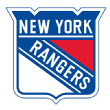
New York Rangers
Grade: B
The Rangers are at a crossroads, caught between making a playoff push while trying to get something for players they could lose in the offseason for nothing.
They entered Thursday in the final Eastern Conference wild-card spot. They are a tiebreaker ahead of the Detroit Red Wings, while six teams are within four points of them.
And so, Smith became a trade candidate ahead of Friday's deadline, returning a second third-round pick for this summer's draft, while a team that hasn't been shy about giving players from its AHL affiliate a chance at NHL opportunities also adds a young forward.
So much of what Rangers GM Chris Drury has done this season has been about finding the right combination of players for a team that has gone from Cup contender to possibly missing out altogether back to one that could qualify for the postseason after all.
Smith scored 10 goals and 29 points in 58 games, on par with expectations as a top-nine forward. But the Rangers felt they could move on from him considering they had other options they could use on the third line.
All this became evident in the wake of the J.T. Miller trade. The reshuffling Rangers have averaged 3.33 goals per game (ninth best in the NHL in that span), while winning seven of the 12 games they've played since the Jan. 31 trade. Smith was playing nearly 15 minutes per game since the trade, but he had only four points -- all assists.
Moving on from Smith, despite retaining 50% of his salary, leaves the Rangers with $3.7 million in cap space and $16.691 million in deadline cap space, per PuckPedia. It also leaves the Rangers with one salary retention spot, with the other being by Ryan Lindgren. -- Clark

March 6: Devils get defenseman Brian Dumoulin from Ducks
In need of more defensive depth to combat their current injury woes, the New Jersey Devils traded for defenseman Brian Dumoulin from the Anaheim Ducks.
New Jersey sent a 2025 conditional second-round draft pick and prospect forward Herman Traff to Anaheim. The Ducks also retained 50% of Dumoulin's contract.
Here's a look at what it means for both parties.
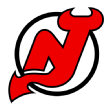
New Jersey Devils
Grade: B
Dougie Hamilton being out on a week-to-week basis and Jonas Siegenthaler going to LTIR meant the Devils needed to find top-four help to keep their playoff hopes afloat.
Entering Thursday, the Devils were third in the Metropolitan Division on 72 points. They have a four-point lead over the Columbus Blue Jackets, who hold the first Eastern Conference wild-card spot and a five-point lead over the Ottawa Senators, who have the second wild-card entry. But in addition to missing Hamilton and Siegenthaler, the team announced Wednesday that star center Jack Hughes would miss the remainder of the regular season after having shoulder surgery.
Hamilton was second in 5-on-5 ice time, while Siegenthaler was fifth in average ice time among Devils defensemen and also logged more than 100 short-handed minutes.
Finding someone was more complicated because the new contract had to fit within the Devils' paltry cap situation. That became even more evident with PuckPedia stating the Devils had a little more than $350,000 in deadline cap space available after they got Dumoulin at a reduced rate.
Dumoulin could be used on the Devils' second pairing next to Brenden Dillon as part of a new-look top four that has Luke Hughes and Brett Pesce as the top pairing. He also gives New Jersey another player who can be trusted on the penalty kill. Dumoulin, a pending unrestricted free agent, has recorded his fifth straight season of more than 100 short-handed minutes.

Anaheim Ducks
Grade: B
Trading Dumoulin allowed the Ducks to collect more capital for the future without hurting their chances at potentially winning a Western Conference wild-card spot. The Ducks began the day six points behind the Calgary Flames for the final Western Conference wild-card opening.
Dumoulin was in a third-pairing role for the Ducks. They already had veterans such as Radko Gudas and Jacob Trouba in the top four providing balance to younger talents such as Jackson LaCombe and Pavel Mintyukov.
Part of Anaheim's strategy has been to play its young defensemen and with Dumoulin, it made it harder for the promising Olen Zellweger to receive the consistent ice time some of his cohorts have found over the last two seasons.
It currently leaves the Ducks with six defensemen who are either under contract or under team control entering next season at the team-friendly price tag of $15.61 million. They'll get Dumoulin's salary off the books while still having the final year of Cam Fowler's retained salary.
As for the capital they attained, the Ducks are now back in the second round of this year's draft having lost their original second-rounder in a previous trade. Traff, a third-round pick in 2024, has spent the season in Sweden where he's played in the SHL and the HockeyAllsvenskan. He also had two goals in seven games with Sweden at the world junior championships. -- Clark

March 5: Lightning reunite with Gourde, add Bjorkstrand as well
Could a familiar face and a familiar strategy once again pay off for the Tampa Bay Lightning?
The Lightning re-acquired former center Yanni Gourde, All-Star winger Oliver Bjorkstrand, a 2026 fifth-round pick and prospect defenseman Kyle Aucoin in a three-team trade with the Seattle Kraken and Detroit Red Wings. The Kraken received forward Michael Eyssimont, a 2026 first-round pick, a 2027 first-round pick and a 2025 second-round pick via the Toronto Maple Leafs from the Lightning, while retaining 50% of Gourde's salary.
The Red Wings received a 2025 fourth-round pick from the Lightning (either Tampa Bay's own pick, or the Edmonton Oilers', whichever is earlier) for retaining 25% of Gourde's salary.
Here's a look at how each front office did in the trade.

Tampa Bay Lightning
Grade: A-
First-round picks are a universal currency. The way each team values them is the unknown variable -- unless it's the Lightning. In their case, first-round picks are simply bargaining chips they'll use to win right now.
This is why Isaac Howard, who was their first-rounder in 2022, is the only prospect drafted in the first round the Lightning have in their system. This is also why they've remained among the NHL's class of top contenders, including two Stanley Cups and three straight Cup Final appearances.
A team that successful in a salary cap world loses familiar faces occasionally -- sometimes they can get them back. It's why they struck a deal before the season to get defenseman Ryan McDonagh, and did it again by getting Gourde in addition to Bjorkstrand.
But make no mistake: While sentimentality is nice, it's all about winning, and that's why the Lightning made this move. Especially as they were able to get Gourde at 25% of his salary by getting the Red Wings involved as a third-party broker.
While it helps that there's a familiarity with Gourde, he gives them flexibility in a way that many contenders covet. He can play down the middle or on the wing, while providing stability to the middle or bottom six. He's an aggressive forechecker who can be deployed in any scenario, while providing contributions in all zones.
He has done those things for the Lightning. He had done those things for a team that didn't win a Cup but upset a defending Cup champion in the first round and got the Kraken within a game of the Western Conference finals.
That history -- along with the fact Gourde is a pending unrestricted free agent -- is what made him so coveted among all contenders entering the deadline. That's why Tampa Bay paid the price it paid.
Bjorkstrand doesn't have Gourde's playoff history. But what he does provide is another top-six option for Tampa Bay. If Jon Cooper deploys him on the second line with Anthony Cirelli at center and Brandon Hagel at left wing, that will be a major problem for opponents.
A Hagel-Cirelli-Bjorkstrand line gives the Lightning three players who play an aggressive yet responsible style. Plus, it gives Cirelli and Hagel a five-time 20-goal scorer as their linemate, as Bjorkstrand is aiming for his fourth consecutive campaign of more than 20 goals.
Bjorkstrand has a year left on his contract worth $5.4 million annually, which gives the Lightning cost certainty -- especially if Bjorkstrand finds success with Cirelli and Hagel, who each have long-term deals.
Even with Bjorkstrand's contract, PuckPedia projects the Lightning will have $14.5 million available in cap space this offseason, to improve a roster that has now has Gourde and Nick Perbix as its major pending UFAs.

Seattle Kraken
Grade: A
Kraken GM Ron Francis has traded players away three times in the team's four-season history. What Francis hadn't done was add first-round picks to his draft capital with those past moves.
Now he has two of them, although he might not get to use them right away. One of the stipulations of this trade is that both first-round picks are top-10 protected. Specifically, if the 2026 or the 2027 first-rounder is a top-10 pick, the Kraken would then get the Lightning's 2028 first-round pick while receiving an additional third-rounder in 2028. If both picks slide to 2028 and 2029, then, the Kraken gets a third-round pick in 2028 and a third-round pick in 2029.
Even with all those moving parts, this is one of Francis' best trade during his time in Seattle. Gourde came to the Kraken through the expansion draft and received a first-round pick in return. They signed Bjorkstrand as a free agent before eventually trading him for another first-round pick, while getting his contract off the books for next season. This gives the Kraken $21.75 million in cap space ahead of the offseason, per PuckPedia.
At present, the Kraken still have $7.83 million in projected deadline cap space. Having that much space -- along with two of their three retained salary spots -- could lead to them being even more involved before Friday's deadline beyond whatever happens with forward Brandon Tanev. Teams have used space and salary retention (as the Red Wings did here) to pick up additional draft capital.
In terms of what it means for the Kraken right now? Bjorkstrand's departure creates an opening on their second line, which could be filled by any number of forwards. Gourde returned to the lineup Tuesday, and had been in a fourth-line role.
Essyimont, who has five goals and 10 points in 57 games this season, gives Seattle another forward who could challenge for one of those middle-six or bottom-six roles. But that comes with the caveat that the Kraken are expected to receive offers for Tanev ahead of Friday's deadline, which would create yet another opening.

Detroit Red Wings
Grade: B-
Playing third-party broker is not a sign about the state of the Red Wings or their playoff chances. They entered Wednesday tied in points with the New York Rangers, who have the final wild-card spot based on tiebreakers.
This trade was simply a business decision for the Wings, who retain quite a bit of financial flexibility ahead of the trade deadline.
Retaining 25% of Gourde's salary will count for only $1.29 million in salary cap space. PuckPedia projects the Red Wings will still have more than $13 million in deadline cap space, while also having two of their three salary retention slots available if needed. But adding a second fourth-round pick gives the Red Wings a chance to add to a farm system that's already considered to be one of the strongest in the NHL. -- Clark

March 4: Oilers land Frederic from the Bruins
The Edmonton Oilers acquired Trent Frederic and Max Jones from the Boston Bruins in a trade that also included the New Jersey Devils as the third-party facilitator.
The Devils will retain 25% of Frederic's salary, sending prospect Petr Hauser to Boston (which is retaining 50% of Frederic's salary) and receiving unsigned prospect Shane Lachance from Edmonton. The Bruins sent Hauser and Jones to Edmonton for prospect Max Wanner, the St. Louis Blues' second-round pick in 2025 and the Oilers' fourth-round pick in 2026.
How did each GM do in the deal? Here are the grades:

Edmonton Oilers
Grade: B+
Frederic is an ideal addition to the Oilers' forward depth. He brings size (6-foot-3, 220 pounds) and can throw that frame around, leading the Bruins in hits per 60 minutes (11.2) over the past two seasons. But he's not lumbering -- Frederic can skate well and contribute offensively.
OK, that last bit is theoretical: The 27-year-old had two seasons of offensive growth, culminating in 18 goals and 40 points in 82 games last season. That has regressed to eight goals and 15 points in 57 games this season. He's a finisher whose shooting percentage has dropped by 4% year over year. But it should be said that he's not the only Boston forward to have an offensive setback this season.
Frederic can also kill penalties effectively, which is good news for an Oilers team that's not very good at that this season (75%, 26th in the NHL).
Best of all is the cap number, which GM Stan Bowman got whittled down to $575,000 thanks to double retention by the Bruins and Devils. Edmonton is in a bit of a salary cap conundrum with Evander Kane's injury status, so a thrifty acquisition like this was paramount.
There is a downside for this trade, which is Frederic's health. He's currently out with a lower-body injury and considered "week to week." One assumes Edmonton got assurances about his injury timeline, but this isn't exactly ideal.
Jones is a throw-in winger, but one who has seven seasons of NHL experience under his belt -- although he saw more time in the AHL than in Boston this season. He was a bust with the Bruins, however.
Czech forward Hauser, a fifth-round pick by the Devils in 2022, stands around 6-foot-4. The 21-year-old is a project if the Oilers eventually sign him.

Boston Bruins
Grade: A-
Once GM Don Sweeney made it clear that Brad Marchand would potentially be the only pending unrestricted free agent the team would negotiate with before the trade deadline, Frederic might as well have started packing his bags.
Even if Boston was in a playoff spot, it might have traded this pending UFA anyway for future assets. The $1.15 million they retained on Frederic is their first retention spot used this season. Hey, it's not like they're going to be adding.
That second-rounder they received should be upper-to-middle-range in the draft, given where the Blues are in the standings. Boston didn't have one of its own this season after trading it to Washington in 2023 in the Dmitry Orlov swap.
Wanner is a 21-year-old, right-shooting defenseman who spent the past two seasons with the AHL Bakersfield Condors. He was buried on the Oilers' depth chart, having struggled through a season that saw him miss time due to injury. Not a bad prospect for the Bruins to get into their pipeline.
The Bruins also found a taker for the last year of that Jones contract ($1 million), which is a plus even though he was a minus in his seven games in Boston.

New Jersey Devils
Grade: B+
On the one hand, this is New Jersey basically paying $575,000 for the rights to Shane Lachance, a 21-year-old winger who captains Boston University and stands 6-foot-5. He has 25 points in 32 games this season for the Terriers, after being selected No. 186 overall in 2021 by the Oilers.
On the other hand, let it never be said the NHL isn't a land of potential nepotism: Lachance's father is former New York Islanders defenseman Scott Lachance, who is the Devils' head of U.S. scouting.
Still, not a bad bit of salary retention business at the deadline for the Devils. If Lachance's skating ever improves, they might have something there. -- Wyshynski

March 1: Panthers land Jones, send Knight to Blackhawks
After saying he wanted to play for a contender, Seth Jones is now a member of the defending Stanley Cup champions.
The Florida Panthers acquired Jones and a 2026 fourth-round pick from the Chicago Blackhawks with goaltender Spencer Knight and a conditional 2026 first-round pick going the other way. The Blackhawks will also retain 25% of Jones' salary for the next five seasons.
How did each front office perform in the NHL's latest blockbuster? Let's find out.

Florida Panthers
Grade: A-
It was never a question of whether the Panthers needed Jones. They did. But many wondered whether the Panthers had the capital to pull off a deal. Turns out, the Panthers had a different kind of capital.
They provided the Blackhawks with a first-round pick one would expect for a top-pairing, right-handed-shooting defenseman such as Jones. But to include Knight in the deal and have the Blackhawks retain $2.5 million in salary over the next four years?
There are many layers to that decision, so let's unpack it.
The package that Panthers GM Bill Zito presented to the Blackhawks was something that checked two significant boxes:
He provided a rebuilding team with a 2026 first-round pick that ensures the Blackhawks will have at least two first-rounders in every draft since 2022
Zito also offered Knight, a 23-year-old goaltender who was a first-round pick in 2019
The Panthers had a hole on the right side of their defense beyond Aaron Ekblad, the second-longest tenured player on the roster. Ekblad is an unrestricted free agent in the final season of an eight-year deal worth $7.5 million annually. PuckPedia projects Florida will have $20.5 million in cap space this offseason, which means a deal could be struck to keep Ekblad. The Panthers can also use that space to re-sign forward Sam Bennett, another pending UFA.
Jones is under contract for four more years at a rate that provides flexibility, and the Panthers have a top-four unit this season that features Gustav Forsling, Niko Mikkola and Ekblad.
Although ... at what potential long-term cost?
The Panthers needed to decide their long-term plans in net. They won the Cup last season -- and have had the greatest period in franchise history -- with future Hall of Famer Sergei Bobrovsky as their No. 1 option. Meanwhile, Knight developed into a backup, and was slated to be his heir apparent in the crease.
Bobrovsky, 36, has one year remaining on his deal at $10 million before hitting free agency. Some thought the Panthers could recoup those savings and re-sign Knight, who is 13 years younger, to a new contract.
Including Knight in the deal to get Jones means the Panthers must find another solution in goal post-Bobrovsky. In the interim, the Panthers have a proven backup option in Chris Driedger, with the 30-year-old playing this season in the AHL.
If the Panthers win another Cup this season -- or when they have Jones on the roster, the cost of losing Knight is easily justified.

Chicago Blackhawks
Grade: A+
Finding a legitimate franchise goalie is difficult, yet the Blackhawks may have just found one in Knight.
Think about the conversation that's being had right now about the state of American hockey: Goaltending is one of the biggest advantages the United States has, with Connor Hellebuyck, Jake Oettinger, Jeremy Swayman, Thatcher Demko and rookie Dustin Wolf all being developed in the country.
It wasn't that long ago when Knight, who was a first-round pick partly due to his prototypical size, was in that conversation. Going to the Blackhawks and possibly establishing himself as the outright No. 1 goalie could see him get back into the mix.
But what does his arrival mean for the Blackhawks' goaltending landscape?
Knight is now the fourth goalie on the Blackhawks' NHL roster who is either under contract for next season or the team has control via restricted free agency. Laurent Brossoit, who is on injured reserve, has a year remaining at $3.3 million while Petr Mrazek has a year remaining at $4.25 million. Arvid Soderblom costs only $963,000 but he's the RFA.
With Knight on the roster, the Blackhawks could trade one of those other goaltenders, with the hopes of adding even more draft capital to what's already a rather strong reserve of draft picks. This would also open the door for Knight to get more playing time. He's 12-8-1 with a 2.40 goals-against average and a .907 save percentage in 23 games for Florida. The most he has played in an NHL seasons is 32 games, while the most he's had in his professional career are the 45 he played last season in the AHL.
The more looming question around their goaltending landscape is: What does this mean for Drew Commesso?
Commesso was a second-round pick in 2020 that came through the famed United States National Team Development Program before he played three seasons at Hockey East powerhouse Boston University. Commesso's final two seasons at BU reinforced the belief he could become the Blackhawks' goalie of the future.
He finished his first AHL season with a 2.65 goals-against average and a .906 save percentage in 2023-24. Commesso is still in the AHL but played two NHL games in mid-December. He allowed four goals on 24 shots to the New Jersey Devils in one of those games before he was sent back to the minors.
Since then, he's had 15 starts in the AHL and has allowed more than three goals in 15 of those outings. That includes a run of five consecutive games in which he allowed more than three. In total, he's allowed more than three goals in 15 of his 25 games this season; to be fair, he's played behind a team that has been inconsistent throughout the season.
In other words, finding another young goaltending option was a possibility this trade season.
But instead of just another option, they added one of the few goaltenders who has gone in the first round in recent memory, further strengthening a youth movement that's considered one of the NHL's most promising. -- Clark

March 1: Predators trade Nyquist to the Wild
Shortly after one Central Division team made a trade on Saturday, two more made a deal with each another.
The Minnesota Wild received forward Gustav Nyquist from the Nashville Predators in exchange for a 2026 second-round pick, with the Predators retaining 50% of Nyquist's salary.
Here's a quick glance at what it means for both clubs.

Minnesota Wild
Grade: B
Any deal the Wild were going to make ahead of the deadline had to fit within their salary cap constraints. They entered Saturday with minus-$603,556 in projected cap space, but Kirill Kaprizov and his $9 million cap hit going to long-term injured reserve meant there was extra room, per PuckPedia.
Having a manageable cap hit, among other items, is what made Nyquist such an attractive option for the Wild -- or any team that needed additional offensive support at a team-friendly price tag.
Getting the Predators to retain 50% of Nyquist's salary means the Wild are on the hook for $1.595 million. PuckPedia indicates the Wild have a little more than $6.632 million in deadline cap space; it's possible they could add more before Friday's deadline.
The expectation is that the Wild could add another forward. There has been a need for offensive consistency since December when Kaprizov, who emerged as a Hart Trophy candidate, sustained an injury that has kept him out of the lineup. His 23 goals still lead the Wild, while his 52 points are tied for the team lead -- despite playing 23 fewer games than current leader Matt Boldy.
The situation got worse this week when top-line center Joel Eriksson Ek was injured, and he'll be out on a week-to-week basis with a lower-body injury. The Wild entered the weekend ranked 21st in goals per game; despite that, they are third in the Central Division, while having the same number of points but played one fewer game than the Colorado Avalanche, who hold the first wild-card spot.
The Wild could move Nyquist to their first or second line while shifting Vinnie Hinostroza, who was on their second line, to the third. There is belief that Nyquist can ramp his scoring back up to previous levels; he's scored just nine goals and 21 points in 57 games for the disappointing Predators, but he had 23 goals and 75 points in 81 games this past season.

Nashville Predators
Grade: B
At one point, the Predators were believed to be a team that was going to be active at the deadline because they would be challenging for a playoff spot.
Instead, the Predators are now focusing on their future. Part of that includes reshaping portions of their roster, and that's what ended Nyquist's time with the club before the deadline.
He was Nashville's most prominent pending UFA in a market that also has other forwards reportedly available, such as Yanni Gourde, Brock Nelson, Brayden Schenn and Jason Zucker, among others. His manageable cap hit meant the Preds were going to have options, and they found one that adds a nice bit of draft capital.
Given that they were already retaining part of Mattias Ekholm and Ryan Johansen's contracts, and would have to retain on Nyquist, this deal had to be the right one.
Getting the Wild's 2026 second-round pick adds to an impressive haul; the Predators may end up being one of the busiest teams ahead of the NHL draft if GM Barry Trotz elects to make subsequent deals.
The Predators have three first-round picks and two second-round picks in 2025, along with now having an extra second in 2026. -- Clark

March 1: Lindgren, Vesey to Avs; de Haan, Parssinen to Rangers
Finally! A trade has happened as we enter the final six days before the March 7 NHL trade deadline.
The Colorado Avalanche acquired defenseman Ryan Lindgren, forward Jimmy Vesey and prospect defenseman Hank Kampf from the New York Rangers on Saturday for forward Juuso Parssinen, defenseman Calvin de Haan, a conditional 2025 second-round pick and a conditional 2025 fourth-round pick. The Rangers will also retain 50% of Lindgren's salary.
Here's a look at how both GMs did in the trade.

Colorado Avalanche
Grade: B+
The Avs lost Josh Manson to an injury before 4 Nations Face-Off, and he remained out of the lineup through the Avs' first four post-tournament games. His absence created questions about whom they would pursue to strengthen a top-four group that was using Oliver Kylington as a fill-in.
Getting Lindgren accomplishes a few items for the Avs:
He gives them a proven top-four, defensive-minded defenseman
Like Manson, he provides balance to a second pairing, which allows Samuel Girard to continue operating as a facilitator in the offensive zone
He can log heavy minutes on a penalty kill
This final part is critical, as it could lessen the burden on Devon Toews and Cale Makar, who lead the Avs in short-handed minutes (among other categories).
Vesey is a bottom-six forward with size who can be used in rotation with Ross Colton, Joel Kiviranta, Logan O'Connor and Miles Wood. He has just four goals and six points in 33 games this season, with the idea he could add more, considering he finished with more than 11 goals in consecutive campaigns before the 2024-25 season. He would also give them another forward option on the PK. He had three consecutive seasons of logging more than 85 minutes in short-handed sequences before this one. This season, he was limited to a little more than five total PK minutes with the Rangers.
This deal provides the Avs with a bit of a respite while Manson recovers, at a time when the club is trying to reach the playoffs either through one of the three Central Division spots or as a wild-card entry. Entering Saturday, the Avs were in the first wild-card spot. They have the same number of points as the Minnesota Wild, who are third in the Central, but the Wild have played one fewer game.
While both players are a fit, this trade works even better for the Avs because both Lindgren and Vesey are pending unrestricted free agents. That gives the Avs a six-player pending UFA class ahead of an offseason in which PuckPedia projects they'll have only $8.2 million in cap space.

New York Rangers
Grade: B+
Lindgren's future with the Rangers was in question as a pending UFA who might not have had a place in the blue-line rotation moving forward.
The Rangers will need to re-sign RFAs K'Andre Miller and Zac Jones this summer, while having a projected $17.83 million in cap space according to PuckPedia.
Re-signing Jones and Miller would complete a defensive unit that already has a Norris Trophy winner in Adam Fox signed to a long-term contract. Will Borgen, who they acquired in-season, went from earning $2.70 million this season to signing a three-year contract extension with the Rangers worth $4.10 million annually.
The Rangers also have Braden Schneider signed for one more season, while Urho Vaakanainen is another pending RFA. Plus, the recently promoted Matthew Robertson is another defenseman under contract for next season.
That gives the Rangers seven defensemen who were either signed or remain under team control for 2025-26, which made pending UFA Lindgren expendable.
That made it important for the Rangers to get something of value in return. They did so by adding draft capital for 2025, plus two players in de Haan and Parssinen who provide depth to a lineup that's still trying to make the playoffs. The Rangers came into Saturday four points behind the Detroit Red Wings and Columbus Blue Jackets for the two Eastern Conference wild-card spots.
Moving on from Lindgren means the Rangers have adjustments they'll need to make when it comes to who takes over on the second pairing and on the PK. It's possible that either Jones or Schneider will get promoted to the second pair, while de Haan could be one of those players who helps fill the void left by Lindgren on the Rangers' PK. -- Clark

Feb. 1: Stars get Granlund, Ceci from Sharks
It's been a week for the Dallas Stars.
Saturday was another extension of that week, with the Stars getting forward Mikael Granlund and defenseman Cody Ceci from the San Jose Sharks for a 2025 first-round pick and a conditional 2025 third-round pick.
How did both GMs perform in this trade? Let's find out.

Dallas Stars
Grade: A-
Let's go back to the week the Stars were having. A week that started with a healthy complement of players saw them lose four players and extended amount of time. It started Thursday when they announced Miro Heiskanen was going to be out for multiple weeks with a lower-body injury. It continued Saturday when they placed defenseman Nils Lundkvist and forward Tyler Seguin on Long Term Injured Reserve while moving forward Mason Marchment to injured reserve.
Less than two hours later, they traded for Granlund and Ceci in a move that should help the Stars in the interim and throughout the rest of the season.
As for the short-term outlook, Granlund provides them with another top-six, two-way forward who can be trusted to play in key minutes in 5-on-5 situations, the penalty kill and the power play. It's possible that the Stars would use Granlund as their third-line center with Seguin out of the lineup.
Heiskanen's absence created a top-four opening and the additional loss of Lundkvist meant there was an even greater need on the back end. Ceci gives them a player who can operate in a top-four role while Heiskanen is out. When Heiskanen returns, Ceci can be shifted into a third-pairing role, allowing the Stars to have a rotation between Lian Bichsel and Matt Dumba on that final pairing.
It's the sort of move that fits for a team in a championship window like the Stars. Ceci and Granlund are pending unrestricted free agents at the end of the season. They'll be part of an eight-player UFA class that features captain Jamie Benn and Wyatt Johnston.

San Jose Sharks
Grade: A+
The Sharks have built their roster in a way that allows their young core of Macklin Celebrini, Will Smith, William Eklund and Yaroslav Askarov more opportunities to develop. But it's also been constructed in a manner that has allowed them to have pending UFAs they could move ahead of the deadline.
That's what made having Ceci and Granlund so valuable for the Sharks.
With this trade, San Jose was able to accomplish two objectives. It was able to get what is now a second first-round pick in this year's draft while adding a third-round pick to give them a total of eight picks -- and they could add more.
Another is it didn't have to take on any salary or need a third-party broker to facilitate a trade for two players who had some of the higher salaries on the team.
Part of the challenge facing the Sharks ahead of this particular trade deadline is the lack of salary retention slots. They've retained money on Brent Burns, Tomas Hertl, and Erik Karlsson. They'll get the Burns contract off the books this year while having two more years of Karlsson and three more years of Hertl.
So, to get a deal done for two of their more coveted UFAs without having the retain any salary creates the potential to move some of their seven remaining pending UFAs without any additional financial challenges. -- Clark

Jan. 31: Miller to Rangers, Chytil and more to Canucks
The NHL. Where apparently Friday nights are the prime time for blockbuster trades?
This time it was the New York Rangers, who acquired long-time target and center J.T. Miller in a trade with the Vancouver Canucks. The Rangers received Miller, defenseman Erik Brannstrom and prospect defenseman Jackson Dorrington, with center Filip Chytil, prospect defenseman Victor Mancini and a protected 2025 first-round pick going to the Canucks.
Let's look at how each GM did and what the impact could be going forward.

New York Rangers
Grade: A-
The Rangers might be many things this season. Boring sure isn't one of them.
They traded their captain Jacob Trouba. They moved on from the one-time No. 2 pick in the draft (Kaapo Kakko) who was thought to be one of the future faces of the franchise. Now they have acquired one of the most coveted players more than a month ahead of the NHL trade deadline.
Can getting Miller be the move that helps the Rangers go from being five points out of the final wild-card spot in the Eastern Conference in late January to landing a playoff spot by the end of regular season?
Miller provides the Rangers with another dimension they were lacking within their top nine. He probably could find a place in the top six either as a winger or somewhere down the middle. Either way, he creates possibilities that they just didn't have before.
Miller gives them another two-way forward they could pair with Vincent Trocheck on the first line. Or he could be paired on the wing with Mika Zibanejad on the second line. But those aren't the only options. There's also the possibility the Rangers could play Miller down the middle to create a dynamic that has him, Trocheck and Zibanejad anchoring their top three lines.
That's one dimension. What he offers from an offensive consistency standpoint is another. Miller sat out games earlier this season but is still projected to finish with 57 points in 66 games. That's an average of 0.86 points per game.
Artemi Panarin is the only Ranger who's averaging more points per game this season. Miller is a candidate to play on the first-team power-play unit considering he has 14 power-play points, which would be third on the Rangers behind Panarin and Adam Fox.
Getting Miller goes well beyond what he could do for the Rangers this season. He's in the second year of a seven-year contract that provides the Rangers with cost certainty ahead of an offseason where they face looming decisions.
Having cost certainty probably played a role in why they were comfortable moving on from Mancini after signing Will Borgen, who arrived in the Kakko trade, to a five-year deal worth $4.1 million a season.
The money the Rangers committed to Borgen plus what they've added from Miller's contract means they're going to have what PuckPedia projects is $18.69 million available ahead of what should be a busy offseason. The Rangers have a six-player restricted free agent class led by Will Cuylle and K'Andre Miller, while Ryan Lindgren is a pending UFA after signing a one-year deal worth $4.5 million.

Vancouver Canucks
Grade: B-
NHL front offices are not a monolith. But they all value secrecy. So, when Canucks president of hockey operations Jim Rutherford confirmed there was a rift between Elias Pettersson and Miller, it made the possibility of a trade even more probable.
Of the two, Miller appeared to be the one who was going to leave. He's older by five years and his $8 million annual cap hit was going to be easier to move than Pettersson's $11.6 million.
Miller has finished with more than 80 points in the past three seasons and is averaging 0.88 points per game this season. Pettersson has had two seasons in the past three in which he has finished with more than 80 points and is averaging 0.72 points per game this season.
Miller's departure should hypothetically bring a resolution to the tension that was building within the Canucks' organization. Figuring out if his departure can lead to Pettersson regaining offensive consistency while also trying to make the playoffs is another matter.
The situation facing the Canucks meant there was always a possibility they wouldn't receive someone who could be a like-for-like replacement for Miller.
Now, the Canucks are in a position to trust Chytil with the demands that come with being a top-six center.
Promise has followed Chytil since he was drafted by the Rangers in the first round in 2017. There have been seasons when his potential surfaced such as when he had 22 goals and 45 points in 74 games in the 2022-23 season. But there have also been injuries that have made it hard for him to find consistency, including multiple documented concussions, one of which led to him sitting out 72 regular-season games last season.
The most ice time Chytil's received through a full season came in his second year when he was averaging 14 minutes, 50 seconds. Miller was averaging close to 18 minutes this season but has averaged more than 19 minutes in every season he has played for the Canucks since arriving in 2019-20.
Miller was an important part of the Canucks penalty kill having logged more than 93 minutes of short-handed ice time per season over the past four seasons. Chytil has logged less than 15 minutes of short-handed ice time through his career, according to Natural Stat Trick.
But the Canucks have also shown that newcomers can find success in a short time. They've seen it the past few seasons with Filip Hronek, Andrei Kuzmenko and with Jake DeBrusk, who is on pace for a career-high 28 goals this season.
What Chytil does provide the Canucks is additional cap space. He's making $4.44 million annually, a savings of more than $3.5 million that could prove useful before the trade deadline. Chytil has two more years left on his contract and would be eligible for free agency after the 2026-27 season.
It's also the type of savings that could aid the Canucks in the offseason given Brock Boeser is in the final season of a contract that pays him $6.6 million annually.
As for everything else in the trade? The Canucks picking up a protected-top 13 pick means they'll have two picks in 2025. It's possible they could use one of those along with what PuckPedia projects to be $12.198 million in deadline cap space to facilitate a deal.
Mancini, a fifth-round pick in 2022, provides the Canucks with another young defenseman in a system that already has Sawyer Mynio, Elias Pettersson and Tom Willander. Mancini had five points in 15 games for the Rangers before returning to the AHL where he has three goals and 10 points in 23 games. -- Clark

Jan. 31: Canucks add Pettersson, O'Connor from Penguins
Because one Friday evening trade wasn't enough for the Vancouver Canucks.
They used the first-round pick they received from the J.T. Miller trade few hours earlier in another deal to get defenseman Marcus Pettersson from the Pittsburgh Penguins. The Canucks also received forward Drew O'Connor with forward Danton Heinen, defenseman Vincent Desharnais, the rights to forward Melvin Fernström and the first-round pick going to Pittsburgh.
Let's look at how both front offices fared.

Vancouver Canucks
Grade: B
Certain issues have been present throughout the Canucks season and finding a consistent partner for star captain Quinn Hughes was one of them.
Hughes logged 389 minutes in 5-on-5 play with Filip Hronek while also getting 333 minutes in 5-on-5 play alongside Tyler Myers, according to Natural Stat Trick. It's a contrast from last season when Hronek and Hughes were nearly exclusive, logging close to 1,200 minutes together in 5-on-5 sequences.
The thought is Pettersson provides Hughes with a partner that can establish cohesion.
Pettersson is more than just a top-pairing partner for Hughes. He strengthens their top four options while adding to a defensive structure that is in the top five in fewest shots allowed per 60 and fewest scoring chances allowed per 60, according to Natural Stat Trick. He also logged more than 200 short-handed minutes last season, which gives Canucks coach Rick Tocchet one more option on a penalty kill that ranks 13th.
Although Pettersson fills one void, what role could O'Connor play in helping the Canucks address the void left by Miller's departure.
O'Connor gives them another top-nine, two-way forward who will likely replace Heinen on the Canucks' PK. But O'Connor, who scored 16 goals and 33 points last season, has only six goals and 16 points in 53 games. He is projected to finish with nine goals and 25 points.
It's possible the Canucks could pair him on the second or third line next to Filip Chytil, who arrived in the Miller trade. If so, that gives them two players who've combined to score 36 points this season. Miller had 35 by himself, which raises questions about what this could look like from an offensive production standpoint for the Canucks.
Goals have been harder to come by than they were last season for the Canucks. They're averaging the second-fewest shots per 60, the second-fewest scoring chances per 60 and rank 20th with 2.84 goals per game.
As for what it means in the bigger picture: The Canucks only took on an additional $705,000 in salary, and Pettersson and O'Connor are pending unrestricted free agents, whereas Heinen and Desharnais each had one more year remaining on their respective contracts.
Pettersson and O'Connor will be part of a six-player UFA class that also features Brock Boeser and Kevin Lankinen.
PuckPedia projects the Canucks will have a little more than $11 million in deadline cap space which means they could still find more offensive reinforcements over the next several weeks.

Pittsburgh Penguins
Grade: B
They're seven points out of the final Eastern Conference wild-card spot. But they're five points ahead of the Buffalo Sabres for the fewest points in the East and tied for the eighth-fewest points in the NHL which could see them being a factor in the NHL draft lottery.
It's what made receiving a first-round pick from the Canucks arguably the most important aspect of the trade. They now have two first-round picks and that could prove critical given the current state of the Penguins farm system.
Pittsburgh has kept its first-round picks four times since 2013 and only twice since 2020. Having a pair of first-rounders might soften the fact the Penguins won't pick again until the third round, where they currently have three picks.
What might be second-most-important detail is they were able to move on from Pettersson, who was previously their most expensive pending UFA, without having to fill their final retention spot.
Having that final retention spot could aid the Penguins as it appears they could be moving on from more players ahead of the deadline. They have six pending UFAs with the most expensive being Matt Grzelcyk, who carries a $2.75 million cap hit.
Desharnais, who has a year remaining at $2 million, provides the Penguins with another third-pairing option who can also be used on their penalty kill, as he logged nearly 43 minutes of short-handed ice time this season and nearly 160 minutes last season with the Edmonton Oilers.
Heinen, who also has a year remaining at $2.25 million, could take over for O'Connor in the top nine while also filling his role on the Penguins' penalty kill. -- Clark

Jan. 30: Frost, Farabee to Flames; Kuzmenko, Pelletier to Flyers
Could one four-player swap prove beneficial for two teams in the wild-card race?
That's what the Calgary Flames and Philadelphia Flyers will find out after a Thursday trade in which the Flames got forwards Joel Farabee and Morgan Frost in exchange for forwards Andrei Kuzmenko, Jakob Pelletier, a 2025 second-round pick and a 2028 seventh-round pick.
Here's a look at how each GM operated and what it all means.
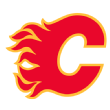
Calgary Flames
Grade: B+
Even after this trade, the Flames still have more than $17.5 million in cap space (per PuckPedia), which is the second most in the NHL behind the Columbus Blue Jackets ($18.75 million).
Plus, the Flames still have two first-round picks for 2025 along with two first-round picks in 2026.
It's a level of asset management and financial flexibility that could prove vital in their bid to reach the playoffs. At some point, they'll have to weigh whether it's worth parting with a first-round pick to land another player who would help their quest to secure a playoff spot; currently, they hold the second wild-card position in the West.
The question of what to do next will be determined over the next few weeks. For now, they have more pressing concerns. The main one being: What kind of production can they get immediately from Farabee and Frost?
Losing three-time 20-goal scorer Anthony Mantha to season-ending knee surgery in November meant the Flames needed additional scoring help. The promise Kuzmenko showed after he was traded to the Flames last season -- with 14 goals and 25 points in 29 games -- withered away, as he's mustered only four goals and 15 points in 37 games this season.
Placing Connor Zary on injured reserve earlier this month only reinforced that need to find top-nine help. The scoring totals just don't add up if this team is fighting for the playoffs.
Only the Anaheim Ducks, Nashville Predators, Chicago Blackhawks and San Jose Sharks are averaging fewer goals per game than the Flames.
Farabee and Frost could potentially help the Flames address their offensive concerns. Farabee is a two-time 20-goal scorer who scored 50 points last season, while Frost could notch his third consecutive 40-point campaign.
Thus far, Farabee has scored eight goals, averaging 0.39 points per game, which has him on pace to finish with 12 goals and 29 points in 77 games. If he continues at that projection, it will result in his poorest offensive season since his rookie season in 2019-20 when he scored 21 points in 52 games.
Frost, on the other hand, has an opportunity to get back on track after spending the last two seasons coming under fire from Flyers coach John Tortorella. He's on pace for 17 goals, which would be the second most of his career, while his 39-point projection over 76 games would just fall short of the 41 points he accrued in 71 games last season.
Making the playoffs for the first time since the 2021-22 season appears to be a priority for this franchise. Another is the need to find stability, considering the Flames' many trades over the last three seasons.
Any role Farabee and Frost can play in that playoff pursuit could further justify whatever plans the Flames may have for them down the road.
Kuzmenko was in the final season of a two-year deal ($5.5 million average annual value), while Pelletier was a pending restricted free agent. Swapping them for Farabee and Frost provides the Flames with more certainty.
Farabee has three years left on his contract carrying a $5 million AAV. Frost is a restricted free agent who is coming off a two-year bridge deal that saw him earn $2.1 million. The Flames would have one more year of control after this season before Frost becomes an unrestricted free agent at the end of the 2025-26 campaign.
They were able to add two players that could help them now and possibly in the future while holding only losing a minimal amount of cap space and keeping those first-round picks.
Those are the circumstances that gives Flames GM Craig Conroy the sort of options ahead of the trade deadline most in his role would covet.

Philadelphia Flyers
Grade: B+
Moving on from Farabee could play a significant role in whatever path the Flyers opt to take in the offseason.
Initially, the Flyers were slated to have $12.88 million in available cap space heading into the summer. But the only money coming off their books was the combined $3.4 million between Rodrigo Abols and Erik Johnson on expiring contracts, along with the Tony DeAngelo buyout at $1.67 million.
Shedding Farabee's salary (and with Kuzmenko on an expiring deal) means they are projected to have $17.88 million in cap space entering the offseason, according to PuckPedia.
In addition, the second-round pick they received in this deal gives them seven in the first two rounds, including three in the first.
But just how the Flyers choose to spend their money in the summer could hinge upon how Kuzmenko performs.
Part of Kuzmenko's appeal is that he has found ways to have instant success in new places. His first season with the Canucks was a breakout, with 39 goals and 74 points. His second season was a step back, with just eight goals and 21 points in 45 games before he was traded to the Flames; he got off to a hot start again, with 14 goals and 25 points in 29 games.
That trend is what makes him a possibility on the second line where he could play alongside Sean Couturier and former SKA St. Petersburg teammate Matvei Michkov. The "high-scoring newcomer" version of Kuzmenko would be highly useful, as the Flyers are five points out of the second wild-card spot.
The scoring will help, but Kuzmenko's play in the defensive zone will dictate quite a bit. Especially with the Flyers in the top five in the fewest shots allowed per 60 and ranked 12th in the fewest scoring chances allowed per 60, according to Natural Stat Trick.
As for Pelletier, the Flyers hope he can continue to build upon what has been his strongest professional season to date. He began the campaign in the AHL, where he had 19 points in 20 games, before he was called up to the Flames in early December.
He has gradually made a case for more playing time. Pelletier went from averaging a little more than 11 minutes per game in December to just under 15 minutes per game in January. It resulted in an offensive return of four goals and 11 points in 24 games, while also logging more than 33 minutes of short-handed ice time.
Like Frost, he's a pending RFA. But Pelletier's $800,000 cap hit means that he could become a more cost-effective option compared to what Philly would have had to pay Frost. --Clark

Jan. 24: Rantanen to the Hurricanes, Necas to the Avalanche
Quiet. Quiet. Quiet. Then the NHL got loud Friday with the first blockbuster trade in recent memory.
The Colorado Avalanche traded winger Mikko Rantanen in a three-team deal involving the Carolina Hurricanes and Chicago Blackhawks. Both Taylor Hall and Rantanen went to the Hurricanes, with Jack Drury and Martin Necas going to the Avs. The Avs also received a 2025 second-round pick and a 2026 fourth-round pick from the Hurricanes. The Blackhawks reacquired their 2025 third-round pick while retaining 50% of Rantanen's salary. Prospect Nils Juntorp went from Chicago to Colorado then to Carolina.
How did each GM perform on a landscape-altering trade? Let's find out.

Carolina Hurricanes
Grade: A+
Quite simply, the Hurricanes are coming for everyone.
The franchise that built its success from drafting and developing has now added an aggressive edge to be active in free agency, while pursuing the sort of trades that make them an even stronger Stanley Cup contender.
Already one of the NHL's more legitimate championship front-runners, the Canes getting Rantanen and Hall only heightens the expectations that they have a roster capable of winning it all this season.
Rantanen provides a level of goal scoring and playmaking ability that could make a potential first line featuring Sebastian Aho and Andrei Svechnikov one of the most dangerous in the NHL. Rantanen's ability to facilitate play while using his powerful 6-foot-4 frame to fend off defenders could be the detail that allows Aho and Svechnikov the needed time to find the type of space that puts opponents in a difficult spot.
Trading Necas takes away one of the Canes' most consistent two-way players. But it hypothetically moves Jackson Blake to the second line while Hall is part of a middle-six winger pool that also features Seth Jarvis, Jordan Martinook, Jack Roslovic and Eric Robinson.
Suddenly, a team that was averaging the fifth-most goals per game in the NHL this season has added more options in the form of Rantanen -- one of the game's most consistently prolific players -- while Hall, a one-time Hart Trophy winner, could potentially finish the season with 20 goals. Those additions could also jump-start a power play that came into Friday ranked 17th.
And this is being done with the Blackhawks retaining half of Rantanen's $9.25 million cap hit while Hall, who is also a pending UFA, carries a $6 million cap hit.
First-year Canes GM Eric Tulsky, who was previously one of their assistant GMs, has set a tone that the priority is to win this season. But this is also the sort of trade that is going to provide Tulsky with another test.
Can he re-sign Rantanen?
Rantanen is a pending unrestricted free agent who can land one of the NHL's richest contracts over the coming months. It's possible the Hurricanes could strike a deal for him. But it will take some work.
They have nine contracts coming off the books this offseason, with the most notable being Frederik Andersen ($3.40 million), Brent Burns ($5.28 million) and Dmitry Orlov ($7.75 million). PuckPedia projects the Canes will have $22.98 million available in cap space, which could be used to re-sign Rantanen while leaving enough left over to strengthen the rest of the roster.
But for now, Tulsky and his team get the highest marks.

Colorado Avalanche
Grade: B+
Practically any conversation about what has made the Avs one of the NHL's most successful teams over the past six seasons has included Rantanen's name.
His ability to create for himself, create for others, and do it in a way that could either complement Nathan MacKinnon and Cale Makar -- but wasn't reliant on MacKinnon and/or Makar -- is what made Rantanen quite valuable. He is a five-time 30-goal scorer and also hit the 50-assist mark five times.
And maybe all of that was the problem for the Avs and Rantanen when it came finalizing any sort of deal.
Rantanen was a pending unrestricted free agent in the final season of a six-year deal that saw him earn $9.25 million per year. At the time he signed the contract, he was the Avs' highest-paid player. Entering this season, he was second behind MacKinnon, who is in the first year of a deal that sees him earn $12.6 million annually.
Each month that passed without both sides agreeing to a deal led to talk that maybe the Avs could move on from Rantanen. But it initially appeared that the talk was, well, just that.
Until it wasn't.
It appears the impasse the Avs were facing with Rantanen was the premium that comes with having a third superstar. Even though the salary cap will continue its rise in the coming years, there were still financial considerations the Avs' front office had to ponder.
They have three more years of Valeri Nichushkin ($6.31 million per year) and Devon Toews ($7.25 million). Ross Colton ($4 million), Samuel Girard ($5.75 million), Arturri Lehkonen ($4.5 million) and Casey Mittelstadt ($5.75 million) are part of a group that has two years left on their deals.
Then there's the money they didn't expect to take on this season when their original goaltending tandem of Justus Annunen and Alexander Georgiev began to struggle and cost the team wins.
Annunen's and Georgiev's deals cost a combined $4.237 million cap hit that brought an extra layer of financial flexibility. Annunen is a pending restricted free agent and Georgiev was going to be a pending UFA.
But then, the Avs replaced them with Mackenzie Blackwood and Scott Wedgewood. While it strengthened the weakest area of the team, it came with a cost. Blackwood signed a three-year deal less than a month after they acquired him, which saw his salary go from $2.35 million annually to $5.25 million annually next season.
Now the Avalanche have $6.75 million committed to their goalies through 2025-26.
Having that much money wrapped up in those players -- along with the Gabriel Landeskog uncertainty, and the fact he has three more years left at $7 million on his contract -- comes against the backdrop of what the Avs must contend with after the 2026-27 season when Makar will need a very large new contract.
It's possible Makar could command the biggest contract in the NHL. And if so, it would leave the Avs needing as much financial flexibility as possible in an offseason that also sees Colton, Girard, Lehkonen and Mittlestadt reach free agency.
That's one of the hypotheticals facing the Avalanche. Another was why take the risk in losing one of the NHL's premier wingers for nothing?
Although Necas is not a prolific producer like Rantanen, he does provide the Avs with a consistent two-way center who can anchor their second line in a way in which others have struggled since Nazem Kadri left in free agency after winning the Stanley Cup in 2022.
Necas is averaging a career-best 1.12 points per game this season, with the belief those figures could either sustain or increase given the Avs have a history of seeing new players succeed in their system.
There's also the financial implication in that Necas has one more year left on his deal at $6.5 million before he hits free agency. Should the Avs look to re-sign him, the expectation is it would hypothetically come at a cost that is much cheaper compared to whatever Rantanen would have commanded.
While the chances of finding a like-for-like trade might have proved difficult, the Avs still received a two-way top-six center in Necas, with Drury giving them another bottom-six option.

Chicago Blackhawks
Grade: C-
Asset management is everything for rebuilding teams. The Blackhawks know this, which is what makes their return in this trade rather puzzling.
Hall was expected to be moved ahead of the trade deadline. The Blackhawks were perceived to be looking to receive draft capital in return for a player who could either be a top-six or at least top-nine option for a contender.
Getting a third-round pick for Hall whether the Blackhawks retained any of his salary? OK, bet. Getting a third-round pick for retaining 50% of a salary to facilitate a deal as a third-party broker? Sure, that's the price of doing business.
But to receive only a single draft pick while giving up Hall and retaining 50% of Rantanen's salary? That raises quite a few questions about why the Hawks couldn't attract more in this deal, particularly upon the realization that the Avs received a 2025 second-round pick and a 2026 fourth-round pick in addition to getting two NHL players in Drury and Necas.
The Blackhawks are not struggling for draft capital. They entered Friday with eight picks for 2025, nine picks for 2026 and seven picks in 2027. They'll have four picks in the first two rounds this summer, including two first-rounders. But no franchise in a rebuild has ever openly complained about having too many draft picks.
They couldn't get more than a single pick here?
There was always the hypothetical that Hall's $6 million cap hit meant they would have had to retain salary. But retaining 50% of Rantanen's salary costs more than it would have to retain the same percentage of Hall's.
Moving on from Hall now means the Blackhawks have other pending UFAs who could be used to attain more draft capital. It's a group that includes Ryan Donato, Pat Maroon and Alec Martinez among others, as the franchise is in line for its fourth consecutive top-10 pick and its third straight top-three pick.
Donato carries a $2 million cap hit and Maroon is at $1.3 million, which makes their salaries more affordable for an interested team. Martinez has a $4 million cap hit. -- Clark

Dec. 18: Kakko to the Kraken, Borgen to the Rangers
Another member of what was once considered the New York Rangers' future is now gone, with the club trading Kaapo Kakko to the Seattle Kraken.
The Kraken received Kakko in exchange for defenseman Will Borgen, a 2025 third-round pick and a 2025 sixth-round pick.
Here's a look at how both front offices performed with this trade and what it all means.

New York Rangers
Grade: C-
Shortly after the trade was announced, it was reported that Kakko's quote to reporters before the team's 2-0 loss Tuesday against the Nashville Predators did not play a role in the trade.
The 23-year-old forward was a healthy scratch in a 3-2 loss Sunday to the St. Louis Blues, which led to him saying, "I know you've got to do something as a coach when you're losing games, but I think it's just easy to pick a young guy and boot him out. That's how I feel to be honest."
Kakko had four goals and 14 points in 30 games. He was on pace for 11 goals and 37 points, entering the final season of his contract as a player who had yet to reach the heights of what was expected when he was the No. 2 pick of the 2019 draft.
Now Kakko is gone, and he becomes the latest personnel move in a season that has led to questions about where the Rangers go next -- and if it could still somehow result in the club reaching the Eastern Conference finals for the third time in four years.
The Rangers had lost five in a row and six of their past seven games around the time GM Chris Drury sent a memo to the rest of the league to inform them the Rangers were open for business. It led to them trading captain and defenseman Jacob Trouba to the Anaheim Ducks on Dec. 6, a move that added salary cap space with Trouba still having another year left on his contract worth $8 million.
Moving on from Trouba meant Braden Schneider and Victor Mancini would receive more opportunities. Those plans changed with K'Andre Miller going on injured reserve Friday, which put a strain on a Rangers team that is 2-6 since Trouba was traded.
It's why Schneider was partnered with rookie Zac Jones on the second pairing, with Urho Vaakanainen, who was acquired in the Trouba trade, on the third pairing with veteran journeyman Chad Ruhwedel.
Losing on Tuesday to the last-place Predators gave the Rangers a third straight defeat, during which time they were outscored 10-3.
Then came the trade that saw them get Borgen, send Mancini to the AHL and recall forward Matt Rempe.
Adding Borgen gives the Rangers another right-handed defenseman who has shown he can play top-four minutes while logging heavy minutes on the penalty kill -- something the Rangers needed with Trouba still leading them in short-handed ice time as of Wednesday.
It's also a move that provides them additional financial flexibility going forward. One of the challenges facing Drury and his front office staff was figuring out their cap situation ahead of next offseason. And that was before they signed superstar goaltender Igor Shesterkin to a long-term extension worth $11.5 million annually.
Jones, Kakko, Miller and Will Cuylle were all pending restricted free agents, while top-pairing defenseman Ryan Lindgren is a pending unrestricted free agent.
By flipping Kakko for Borgen, a pending UFA, it allows the Rangers another outlet to get money off their books with Borgen earning $2.7 million this season. It now leaves the Rangers with a six-player UFA class that also includes Jonathan Quick and Reilly Smith, among others.
This allows Drury & Co. more money to play with as the Rangers seek to keep their coveted core together. A core that no longer features a player who was once thought to be one of the faces of the future. And that's the bottom line here; while Borgen is useful to fill the Trouba-sized hole, Kakko might have some runway left in his development, which will now be revealed in a Kraken sweater.

Seattle Kraken
Grade: B
Kraken GM Ron Francis was able to take Borgen, who was the team's pick from the Buffalo Sabres in the expansion draft, eventually turn him into a top-four defenseman, and trade him (with Day 2 draft picks) for a potential top-six forward in Kakko.
The key word being potential.
Development is one of the items that makes the NHL distinctive -- and also makes it complicated. A 23-year-old in another professional sport would be met with the understanding that they're not a finished product at such a young age.
That's what the Kraken are banking on. It's what the Rangers were also banking on, before pulling the rip cord on a forward who has played the second-most games of his draft class yet is sixth in points; for context, his fellow Finland countryman, Matias Maccelli, was taken 96 picks later and is separated by nine points despite playing 131 fewer games.
Kakko's best season came in 2022-23 when he had 18 goals and 40 points in 82 games, averaging 15 minutes,18 seconds in ice time. Since then, he has scored 17 goals and 31 points in 91 games, while averaging 13:16 in ice time.
Coming to Seattle should lead to Kakko receiving opportunities that were much harder to come by in New York. Whether it be with Matty Beniers, Tye Kartye, Ryker Evans and now Shane Wright, the Kraken have shown they are willing to give young players a chance to earn minutes. Especially with captain Jordan Eberle being on long-term injured reserve, while Yanni Gourde has been day-to-day since last playing on Dec. 10.
Getting the most out of young players is one of the reasons why the Kraken hired coach Dan Bylsma and assistant Jessica Campbell. The work they did developing and winning with quite a few of the Kraken's prospects at the AHL level could potentially lead to Kakko finding more continuity in Seattle.
Again, the key word here being, potentially.
Playing time isn't the only thing that's at stake. Kakko is a pending RFA who has one more year of team control before his UFA years start kicking in before the 2026-27 season.
How he performs this season could at least lead to a one-year deal, with the idea that the Kraken might also be tempted to give him more than that if he becomes a key player for them.
Entering Wednesday, the Kraken were four points out of the final Western Conference wild-card playoff spot. They played an extra game more than the team holding the last spot -- the Calgary Flames -- while the Utah Hockey Club is three points behind but has played three fewer games.
The Kraken were expected to be part of a grouping of teams that could potentially challenge for a wild card, with the notion they might have to decide their path (and role) ahead of the trade deadline.
Spending big money in the offseason to sign Brandon Montour and Chandler Stephenson signaled their intent about what they could do this season and beyond. Adding Kakko only adds to the belief of what this season could potentially mean for the Kraken. -- Clark

Dec. 14: Fowler traded to St. Louis
After 991 games wearing an Anaheim Ducks uniform, Cam Fowler will now wear a St. Louis Blues sweater.
The Blues acquired Fowler and a 2027 fourth-round pick from the Ducks in exchange for a 2027 second-round pick and prospect defenseman Jeremie Biakabutuka. The Ducks will also retain 38.4615385% of Fowler's salary.
Here's a look at how both front offices did with the trade.
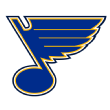
St. Louis Blues
Grade: B+
There are two versions of the Blues in 2024-25: The first version was struggling under Drew Bannister; the second version is under the guidance of Jim Montgomery, who was hired to replace Bannister less than a week after his own dismissal by the Boston Bruins.
In Montgomery's eight games, the Blues have found a defensive cohesion that's been missing. That problem has been one of the largest challenges facing GM Doug Armstrong in his bid to get the Blues back into the playoffs.
Having four defensemen with no-trade clauses was also a massive hurdle when it came to making changes. What opened the door was when one of those defensemen, Torey Krug, sustained an ankle injury that required season-ending surgery in September.
That played a role in them adding Philip Broberg via offer sheet, with the idea that they could be tempted to potentially add more should a deal that fits within their parameters become available.
Enter Fowler, who now represents another potential change in a season that has already seen quite a few.
His future with the Ducks was already in question following the Jacob Trouba trade. To have another top-four option available at a price that could fit within their salary cap structure made Fowler an attractive option for St. Louis.
Now it's a matter of determining what sort of role Fowler, who has one more season after the 2024-25 campaign left on his contract, can play on a roster that's allowing the sixth-fewest goals per game since the Blues hired Montgomery on Nov. 25.
Part of what has helped the Blues is they now have a team save percentage that's fourth in the league in Montgomery's eight games in charge; they have risen to 14th for the whole season. They are allowing the eighth-fewest high-danger chances, while sitting 13th in fewest scoring chances allowed per 60 minutes, and are around league average in shots allowed per 60.
That's one area where Fowler could play a role. Another could be a power play that has struggled before and after they hired Montgomery. They are 20th since Montgomery took over and are 25th on the season.
This could be a win-win deal. Fowler gives the Ducks someone with experience operating a power play. The Blues provide Fowler with the ice time he wasn't receiving on the man advantage, as he had just 10:07 in power-play ice time this season after reaching the 100-minute mark in all but one season since making his debut in 2010-11.
Fowler could pair with Colton Parayko, a duo that could be the latest building block Montgomery could use to find more consistency.
The Blues entered Saturday four points out of the final Western Conference wild-card spot, and this is a move made with erasing that gap in mind.

Anaheim Ducks
Grade: B
Ducks GM Pat Verbeek knew what this season's climate was like for teams needing a top-four defenseman, having just acquired Trouba for Urho Vaakanainen and a 2025 fourth-round pick.
But the Ducks were facing a different situation with trying to move on from Fowler than what the Rangers were going through before they sent Trouba to Anaheim.
What helped Verbeek is that he had the necessary time to find what he felt was the strongest possible trade. And he made a deal that attained more draft capital for a franchise that's believed to have one of the NHL's brightest and strongest farm futures.
There's that word. Future.
The future is one of the major reasons the Ducks moved on from Fowler, who was less than 10 games from playing No. 1,000 for the club. Drafting and developing young defensemen has become a hallmark of what the Ducks have done over the past few years.
It's why they've brought up Jackson LaCombe, Pavel Mintyukov and Olen Zellweger. And while Drew Helleson was acquired in a trade, he's a 2019 second-round pick with promise and size.
The improvement by the young defensive core is why Fowler's power-play minutes significantly diminished this season. And once the Ducks got Trouba, it meant that playing Fowler came at the expense of not playing one of those younger defensemen like Helleson or Zellweger, given LaCombe and Mintyukov have already established themselves as nightly fixtures.
And for a franchise that has shown it is beyond comfortable giving young players a chance to play? Building that young core ultimately led the Ducks down the path to where Fowler was expendable. Getting Trouba, who has one more year left on his deal after this season, was essentially the final push that allowed the Ducks to feel comfortable moving on. -- Clark

Dec. 9: Blackwood to Colorado, Georgiev to San Jose
With goaltending being a major problem for the Colorado Avalanche, could Mackenzie Blackwood be the solution?
The Avalanche acquired Blackwood and forward Givani Smith in a trade with the San Jose Sharks that sees goalie Alexandar Georgiev, forward Nikolai Kovalenko, a 2025 fifth-round pick and a 2026 second-round pick head to the Bay Area. The Avs also retained 14% of Georgiev's salary.
How did both GMs fare in the trade? Let's find out.

Colorado Avalanche
Grade: B
The Avalanche's defensive structure ranks in the top 10 of fewest scoring chances allowed per 60 minutes and shots allowed per 60. Unfortunately, their save percentage as a team is second worst in the NHL.
That defensive zone disconnect is why changes needed to be made for an Avs team that's fighting for a wild-card spot as mid-December draws closer -- despite its status as a preseason Stanley Cup favorite.
But it's also symptomatic of a larger problem with the Avs in that they've had issues building a consistently strong supporting cast around their core led by Nathan MacKinnon, Cale Makar and Mikko Rantanen.
Having that supporting cast is what helped them win a title in 2022. Lacking that cast is why they were knocked out of the first round a year later and lost in the second round last season.
Georgiev averaged 39 wins per season in his first two with the team. But that came with questions: Was Georgiev the sole reason he won so many games in Denver? Or was it the structure around him that led to his success?
All Avs GM Chris MacFarland needed was 18 games this season to answer those questions.
It started when Colorado traded Justus Annunen to the Nashville Predators to get Scott Wedgewood. But it became even clearer when Wedgewood's first win came in relief of Georgiev on Dec. 3 -- when the latter allowed four goals on eight shots in the Avs' 5-4 win over the Buffalo Sabres.
Now the Avalanche are turning to Blackwood and hope he can steady the ship. His .911 save percentage is 12th among goalies with more than 10 games played, while his goals saved versus average is in the top 20.
Blackwood is not perfect, and there are questions about the newest Av:
Is he the answer for a team that has Stanley Cup aspirations? Is he different from the goalie who forced the New Jersey Devils to find alternatives when they made the playoffs in 2023? And while the Avs needed to make a move, was the price they paid to add Blackwood too much given he has never played in the postseason?
We'll find out the answers to all of these in the coming weeks and months.

San Jose Sharks
Grade: B+
Every move Sharks GM Mike Grier makes for the foreseeable future is about building a better tomorrow for the Sharks. The return package for Blackwood will play a role in those plans.
Go back to when Grier acquired Blackwood in 2023. The Sharks parted with a 2023 sixth-round pick to get him from the Devils. Now fast-forward to Monday, and the return Grier received goes well beyond the sixth-round pick he sent to the Devils.
And he still has two pending unrestricted free agent goalies on the roster.
Georgiev's arrival will impact the Sharks at the NHL level and beyond. He will join a tandem with Vitek Vanecek for a team that came into Monday seven points behind the Avs for the final wild-card spot and seven points ahead of the Chicago Blackhawks for the NHL's worst record.
Adding Georgiev gives the Sharks seven pending unrestricted free agents. It's possible that the Sharks could attain additional draft capital ahead of the trade deadline if there's a team seeking goaltending depth. That's another reason getting the Avs to retain 14% of his salary was crucial.
All three of the Sharks' retained salary slots are filled because of previous trades involving Brent Burns, Tomas Hertl and Erik Karlsson. It's what makes the need for the Sharks to present their pending UFAs as affordable to playoff hopefuls even more crucial.
But where it gets more captivating is how the Sharks now have two experienced options in net, meaning they can take their time with developing top goalie prospect Yaroslav Askarov, who had a 1.96 goals-against average and a .927 save percentage in two games before he was returned to the AHL.
Kovalenko is another player who could also help the Sharks this season and possibly beyond. He gives the Sharks a ninth player younger than 25 on the roster, in a group that includes Macklin Celebrini, William Eklund, Mario Ferraro and Will Smith, among others. Kovalenko, who has four goals and eight points in 28 games, could possibly challenge for a top-nine role. He's also a pending restricted free agent, which means the Sharks could look to sign him to a new deal or move on from him via another trade.
All in all, another tidy piece of business for Grier. -- Clark

Dec. 6: Trouba to the Ducks
The New York Rangers traded defenseman Jacob Trouba to the Anaheim Ducks, ending a tense few months of speculation about their captain's future.
The Ducks sent defenseman Urho Vaakanainen and a conditional 2025 fourth-round pick to the Rangers for Trouba. Anaheim takes on all of Trouba's contract, which carries an $8 million average annual value against the salary cap through the 2025-26 season.
The Rangers will receive either the Ducks' or the Detroit Red Wings' fourth-round pick, depending on which one is lower in the draft order.

New York Rangers
Grade: A
The marking period for this trade began on July 19, 2019. That's when then-Rangers general manager Jeff Gorton signed defenseman Jacob Trouba to a seven-year, $56 million contract to avoid salary arbitration.
Despite being one of the league's most effective defensemen at that point -- which is why the Rangers acquired him from the Winnipeg Jets in the first place -- many thought that Trouba's $8 million annual cap hit was overcompensation, considering the bell curve of a physical defenseman's effectiveness in the NHL. The Rangers certainly took that into account: That overcompensation bought them flexibility in the final two years of Trouba's contract, which carried a no-movement clause from 2020-24 before switching to a 15-team no-trade clause.
That no-trade clause still gave Trouba some agency over his future, as the Rangers discovered last summer when his refusal to submit a list of approved teams early reportedly torpedoed a potential trade with the Detroit Red Wings. But it couldn't protect him from the Rangers using their nuclear option, which is what ultimately led to Trouba's trade to Anaheim.
Please recall when the Rangers placed forward Barclay Goodrow on waivers in June, clearing the last three years of his contract off their books when the San Jose Sharks claimed him in a prearranged move. There's no question that GM Chris Drury pointed to that example and told Trouba, "This could happen to you."
You could be on a rebuilding Chicago Blackhawks team that just fired their coach. Or the San Jose Sharks. Or the Red Wings, with whom you didn't want to play last summer. Or shuffle back up to Canada, not as a Winnipeg Jet but as a Montreal Canadien. Such was the waiver wire.
Or Trouba could select from the potential trade destinations placed in front of him, waiving his no-trade clause for one of them.
With that, the captain of the New York Rangers is now a member of the Anaheim Ducks.
Part of this grade goes to the Rangers' front office in 2019, when Drury was an assistant GM, for having the foresight to create this pressure point. And part of it goes to Drury, who exerted that pressure to move Trouba's cap hit off the books, remove an ineffective defenseman from his blue line and send a shock to the system of a struggling team.
The Rangers are 13-10-1 this season. They're in a wild card. But they've lost six games in regulation out of their past seven. Drury was so displeased with what he saw that he put out a memo to 31 other NHL teams telling them he was open for business and mentioning Trouba by name.
Trouba has been a liability all season. He's in the negatives across the board analytically relative to his teammates, including a 47.5% expected goals percentage. He has just six assists in 24 games, skating to a minus-3. Even the one thing the Rangers used to depend on from Trouba -- physicality -- was down, as he averaged 4.87 hits per 60 minutes after averaging 7.81 last season.
Of course, it should be said that Drury basically made him a lame duck, and that has to impact his performance.
In the immediate term, the trade opens up ice time for Braden Schneider and Victor Mancini, two players the Rangers are eager to see develop.
(Vaakanainen, whom they received from Anaheim, is a spare at this point, and was a healthy scratch for the Ducks this season.)
But taking the long view, we've now seen the other shoe drop for the Rangers: Clearing Trouba's salary allowed them to finally sign goalie Igor Shesterkin to his new contract worth $11.5 million against the salary cap -- a record for NHL goalies. Which certainly alleviates one point of long-term planning stress for Drury and only increases this grade
Whether or not the roster shake-up goes beyond Trouba remains to be seen. Don't forget, Chris Kreider's name was in that Drury memo, too.
But getting Trouba off the books and off the ice was something the Rangers had been attempting for months. With more than a gentle nudge, he has sailed to the Pacific.
Nothing like trading your captain through pitiless means to get a locker room's attention.

Anaheim Ducks
Grade: B
I don't hate this from the Ducks' perspective.
Trouba is a better defenseman than the majority of the blueliners on the Anaheim roster. That's assuming some of his poor play was due to the Rangers basically standing in the doorway with his bags packed for six months, which will certainty weigh on a guy.
At least now he's with a team that he begrudgingly picked, with a couple of former teammates (Ryan Strome and Frank Vatrano) and a general manager in Pat Verbeek who says kind things such as "on the ice, he competes every shift, leads by example and is a presence on the blue line every night."
Verbeek also called him "a big part of our future success," and hopefully that means as a mentor to young defensemen rather than signing Trouba until he's 37 when his contract runs out after the 2025-26 season. The Ducks have up-and-comers such as Pavel Mintyukov, Olen Zellweger, Drew Helleson and Jackson LaCombe on the roster, with players such as Stian Solberg and Tristan Luneau in the pipeline. Trouba can be a "lead by example" type, having excelled offensively and defensively during his career. After six seasons in Winnipeg and six more in New York, he has seen some things.
It's safe to say that Trouba is in decline at 30 years old. He might have been a liability with the Rangers, but the bar is set rather lower in Anaheim. This is an atrocious defensive team. The Ducks are giving up 3.14 expected goals against per 60 minutes at 5-on-5, last in the league and the only NHL team over three expected goals against on average this season. They earn only 45% of the shot attempts in a game, 31st in the NHL. No one gives up more high-danger shot attempts (13.5 per 60 minutes) than Anaheim -- although please note that the Rangers were right behind them (13.1).
The Ducks have prioritized physicality, and Trouba can bring that. The idea that Anaheim can roll out Radko Gudas and Trouba on the same defense should have Western Conference opponents already reaching for the Advil.
They didn't give up anything for him. Even if Vaakanainen was playing, which he wasn't, the Ducks were dealing from a position of depth. The fourth-rounder is expendable, given they had two. The $8 million salary cap hit shouldn't impact them much next season: While Mason McTavish will need a new deal this summer, Leo Carlsson's big-ticket second contract won't be until after Trouba's expires.
Plus, if he finds his game in Anaheim and the Ducks aren't in the playoff mix next season, they could always retain salary and flip Trouba at the 2026 trade deadline. He's exactly the kind of defenseman who has value for contenders at the right price.
Verbeek said, "It's rare you are able to acquire a player with Jacob's experience, stature and ability."
Despite this decline and the growing flaws in his game, that's undoubtedly true, and especially for this compensation. The Ducks need more adults in the room. They landed themselves an NHL captain, who can hopefully find more effectiveness in a place where he's wanted. -- Wyshynski

Nov. 30: Jiricek traded to the Wild
In need of a change, defenseman David Jiricek found one Saturday when the Columbus Blue Jackets traded the former No. 6 pick to the Minnesota Wild.
The Wild received Jiricek and a 2025 fifth-round pick, with the Blue Jackets receiving a top-five protected 2025 first-round pick, a 2027 second-round pick, a 2026 third-round pick, a 2026 fourth-round pick and defenseman Daemon Hunt.

Minnesota Wild
Grade: B+
Last season allowed the Wild to draw two conclusions about the state of their defense.
The first was that they appear to have a legitimate franchise cornerstone in Brock Faber, who finished second in Calder Trophy voting. The second was that the team needed to figure out how to continue to get younger on the back end, especially with injuries ravaging a unit that had quite a few players -- Zach Bogosian, Jonas Brodin, Jon Merrill and captain Jared Spurgeon -- all older than 30.
That process began in 2021 when they used one of their two first-round picks to select Winnipeg Ice defenseman Carson Lambos. They acquired Faber in 2022 in the Kevin Fiala trade with the Los Angeles Kings. In June, they used their first-round pick (No. 12) to draft University of Denver defenseman Zeev Buium. Now, they have added Jiricek, the sixth pick in the 2022 draft.
As for what this all means for this season?
Much of that could depend upon Jiricek. Part of what made him available in the first place was the belief that he was unhappy with his role in Columbus. He was averaging 11:11 in six games while logging less than 10 minutes over what became his final three contests before he was sent to the AHL.
Jiricek will remain in the AHL, where he will use his time with the Wild's affiliate to push for a role at the NHL level. Jiricek is a 6-foot-4 puck mover, and those traits have come through in the AHL, where he's scored 15 goals and 60 points in 88 games. This season, he has two goals and three points in four games.
Whether he can find a way to translate his AHL production to the NHL is the looming question. If he can, he'll give the Wild another facilitator with size who could be trusted to play key minutes. Beyond that, he could give the Wild those minutes on his entry-level contract, which is important for a franchise that's had to become adept at spending cap space because of the combined Zach Parise and Ryan Suter buyouts that currently cost $14.7 million but will fall to $1.66 million next season.
The Wild (15-4-4) were two points behind the Winnipeg Jets for the best record in the NHL and the Western Conference entering Saturday. They're allowing the fewest goals per game in the NHL this season, the fewest high-danger scoring chances per 60 and rank in the top 10 in the fewest scoring chances allowed per 60.
Not only have they established consistency, but the Wild also have the depth to go with that continuity. Faber is one of three defensemen who have played in every game, while four of their defenseman have appeared in more than 16 games this season.
Maintaining that level means the Wild don't have to be in a rush to call up Jiricek and can let him settle into their system. And if the Wild can remain in the hunt for a top seed, they've essentially added a one-time top-six pick for what will ultimately become a first-round selection that's toward the bottom of the draft.

Columbus Blue Jackets
Grade: B+
Moving on from a one-time top-10 pick such as Jiricek comes with the question about if a franchise has received or has come close to receiving a return of equal value.
It appears that Blue Jackets GM Don Waddell was able to achieve that by getting a sizable haul along with a defenseman who can play right now with Hunt.
At the time of the trade, the Blue Jackets (10-9-3) look as if they could go in a few directions this season. On Saturday, they were two points out of the final Eastern Conference wild-card spot while also being within five points of having the NHL's worst record.
The fact Jiricek struggled to get minutes and was sent to the AHL before being traded shows that the Blue Jackets were comfortable with their dynamic in the interim. But how this could work out for them in the future is where it gets interesting.
Waddell's time in charge of the Carolina Hurricanes saw the club rely upon the draft to build a roster that has since become one of the NHL's perennial favorites to win the Stanley Cup. One of the ways the Hurricanes reached that destination was to have as many draft picks as possible.
With this trade, the Blue Jackets now have 27 draft picks over the next three seasons.
Another detail that could factor into the decision to move on from Jiricek is the defensive youth the Blue Jackets have on their NHL roster and in their farm system. Five of the seven defensemen on the Blue Jackets' active roster are younger than 27. That does not include Hunt.
They also have youth in their system. They used one of their three first-round picks in 2021 to draft Corson Ceulemans. A year later, they used one of their two first-rounders to take Denton Mateychuk. Of course, the other player they drafted in the first round that year was Jiricek. They also used four of their six picks to draft defensemen in 2024, with the most notable being Charlie Elick, who went in the second round. -- Clark


